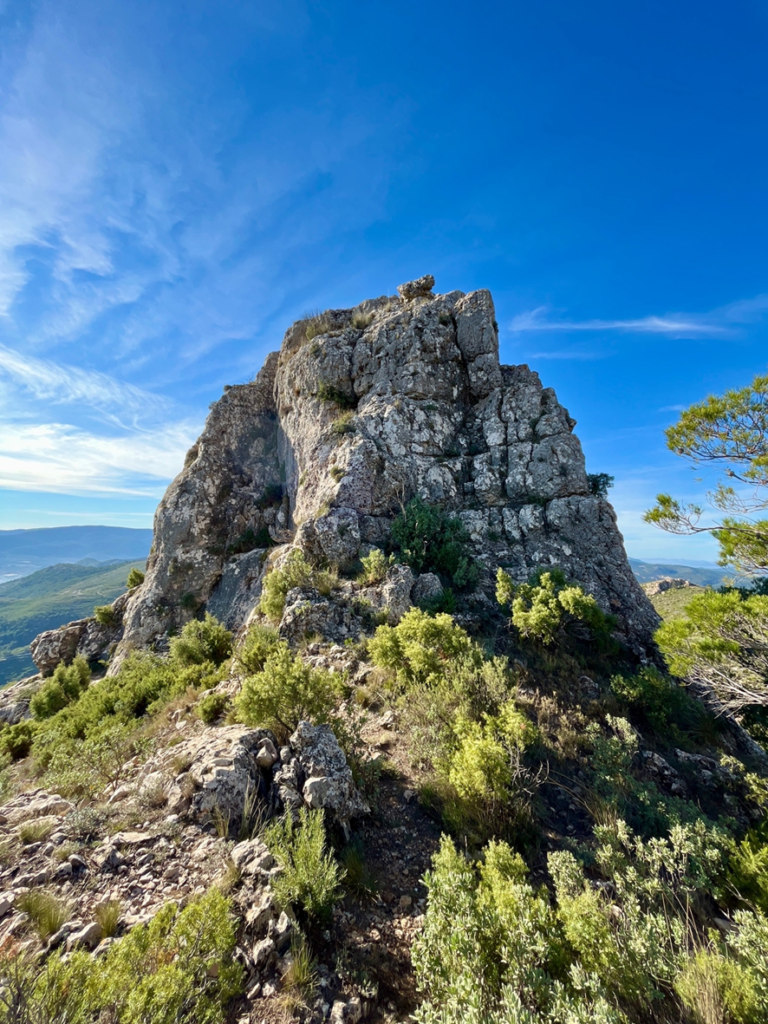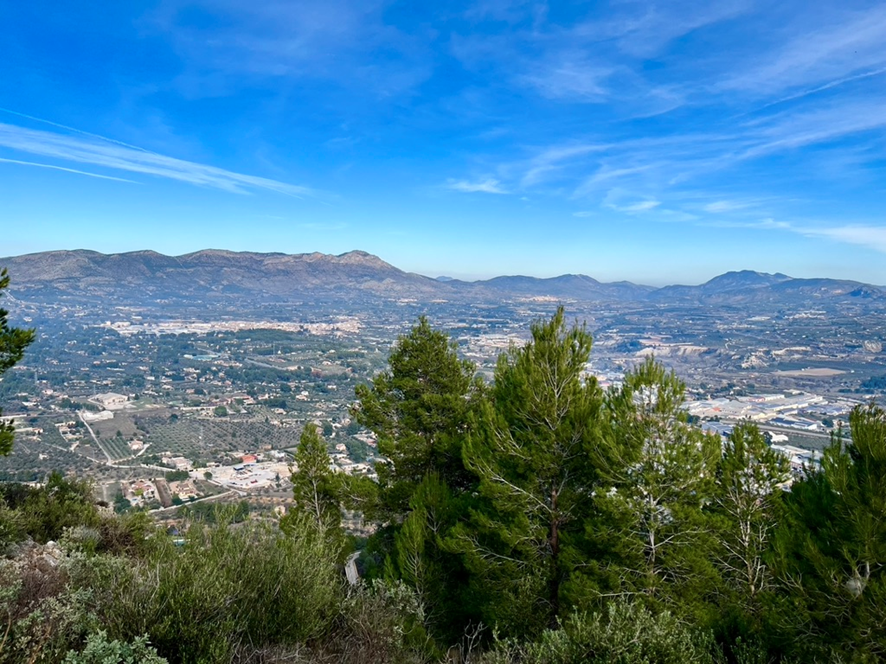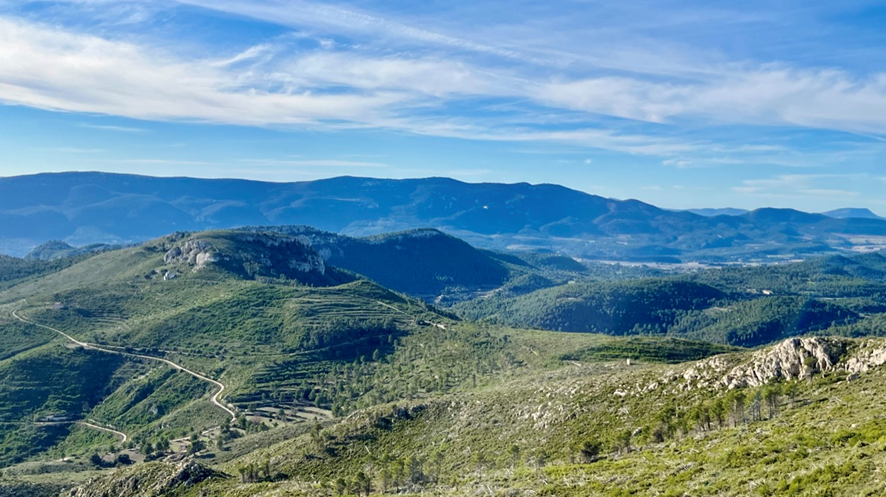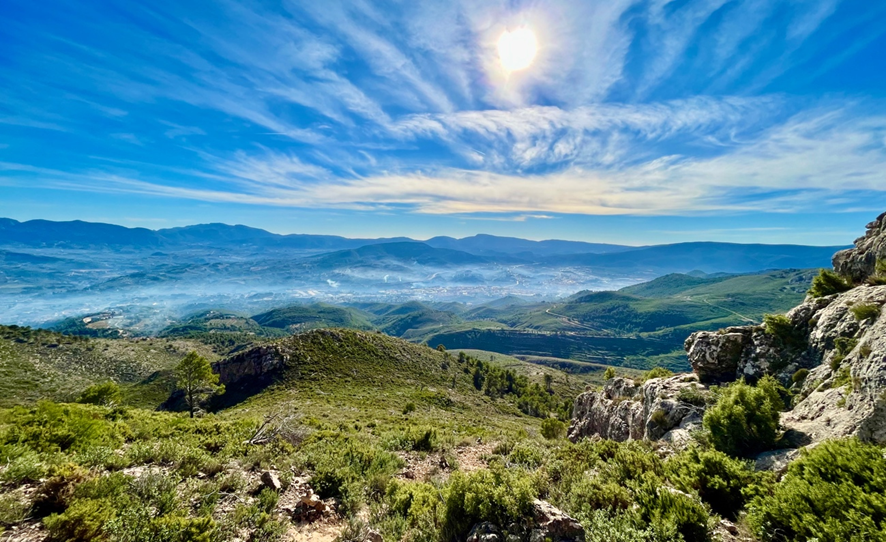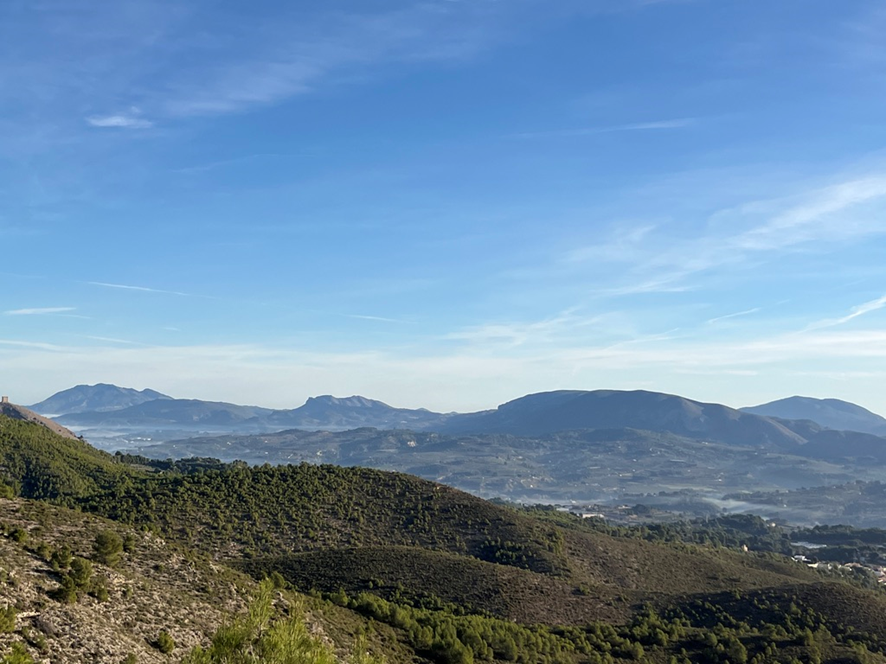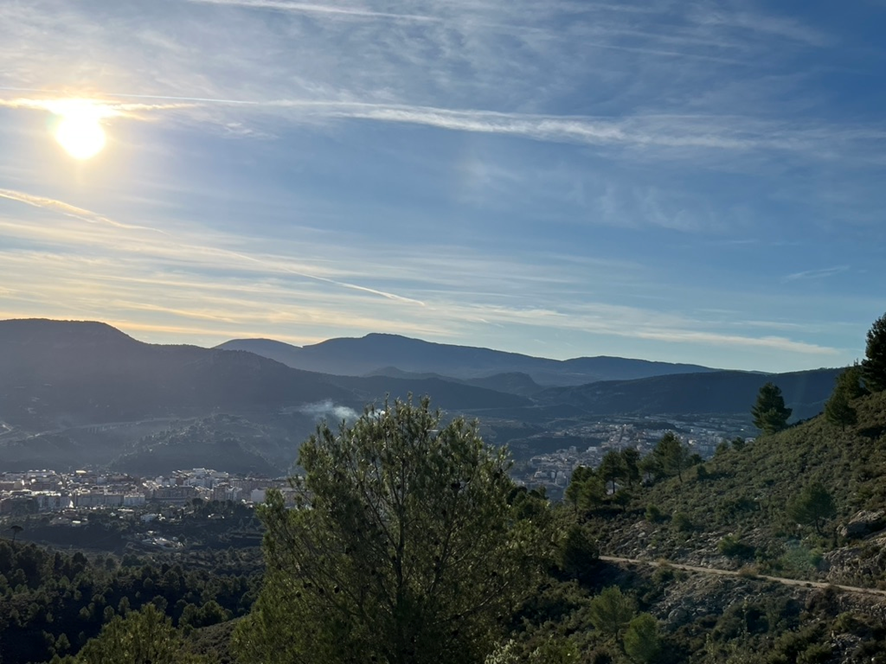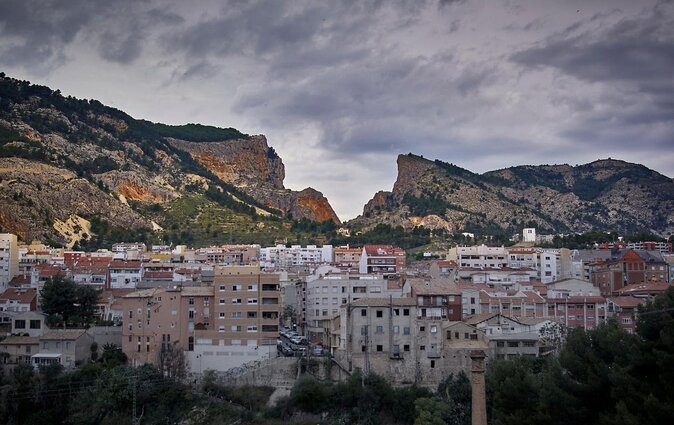
Alcoi – Restaurant Torres de Cotes – Camí del Coll de Serelles i Coll de’En Sabata – Font i bassa de Serelles – Mola de Serelles – Coll de Serelles – Coll de Sabata – Cavall Bernat – Barranc de Moran – Cantera Botella – Refugi Foietes – Mas de la Penya – Zona d’escalada del Mas de la Penya – Castell de Cocentaina – Ermita de Santa Bàrbera – Centre Cultural el Teular – Casc Antic – Plaça i Palau de Cocentaina
| Distance: 14,59 km |
| Difficulty: Moderada |
| Walking Time: 3 h 36 min. |
| Average Speed: 4 km/h |
| Type of Route: lineal, sol d’anada |
| Maximun Altitude: 1198 m |
| Minimum Altitude: 445 m |
| Positive Difference in Altitude: 777 m |
| Negative Difference in Altitude: 933 m |

DESCRIPTION OF THE STAGE
Departure: Car park in front of the Restaurant Torre de Cotes
We leave the restaurant to the right and take the Camí del Coll de Serelles and Coll de Sabata. Easy ascent without any difficulty that we leave to go to the fountain and Serelles basin.
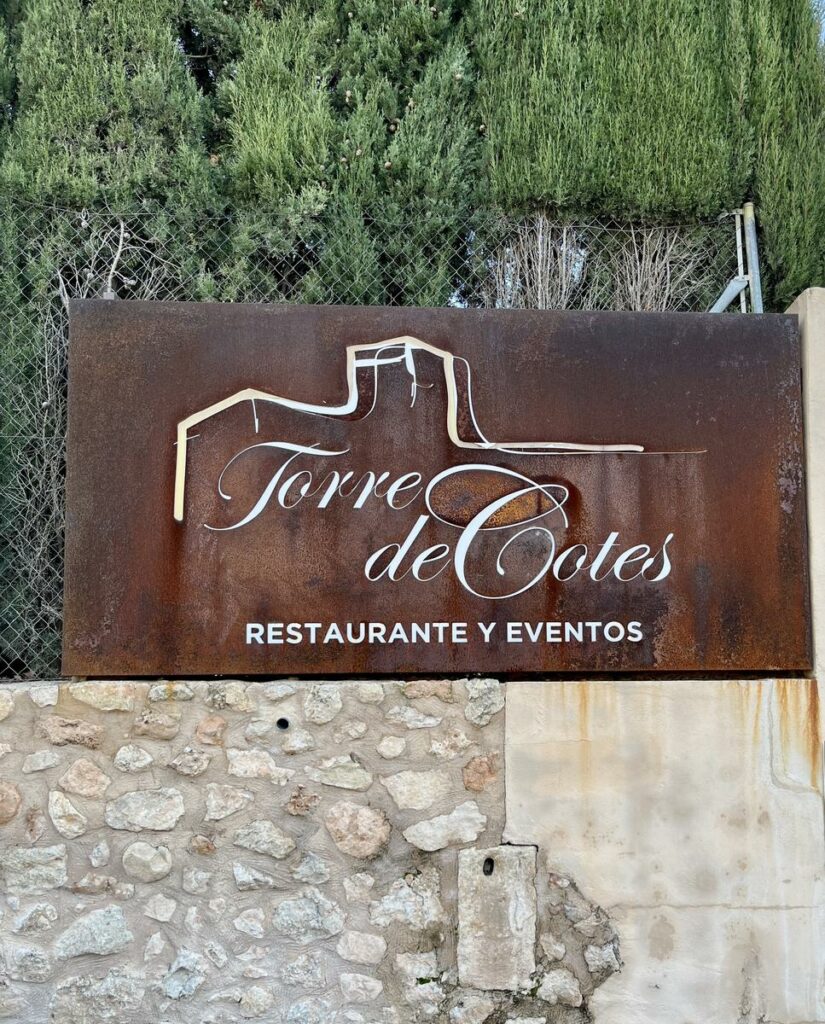
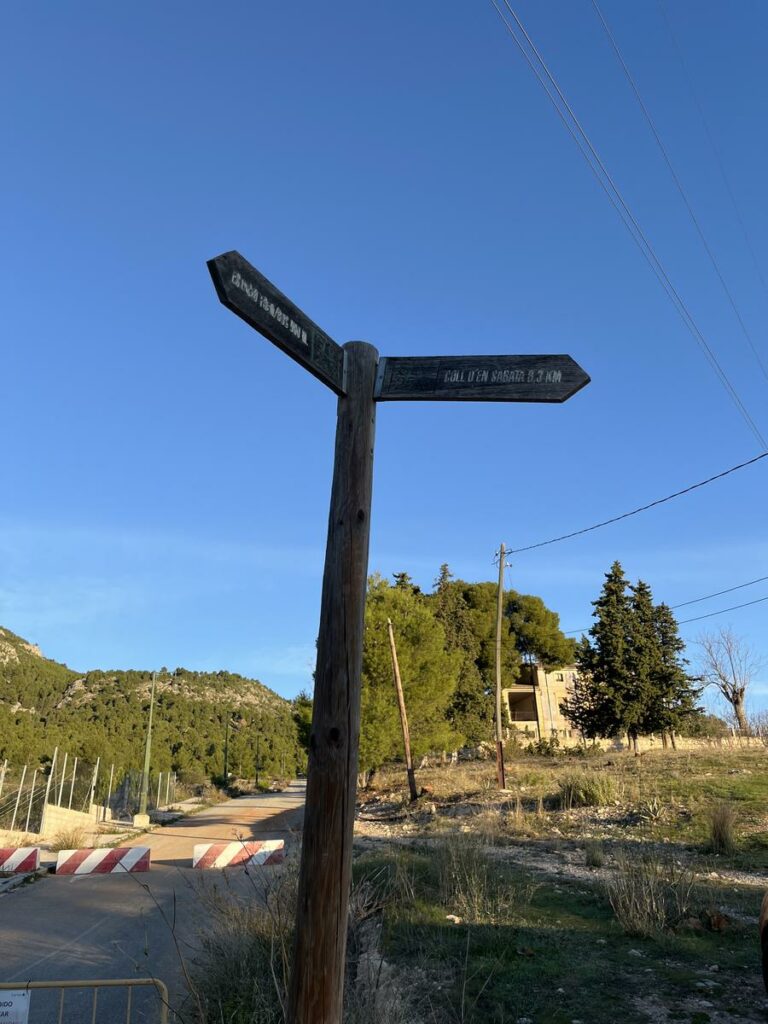
It is necessary to take two paths that appear on the left side of the road. During the climb you can enjoy the panoramic view of Alcoi.
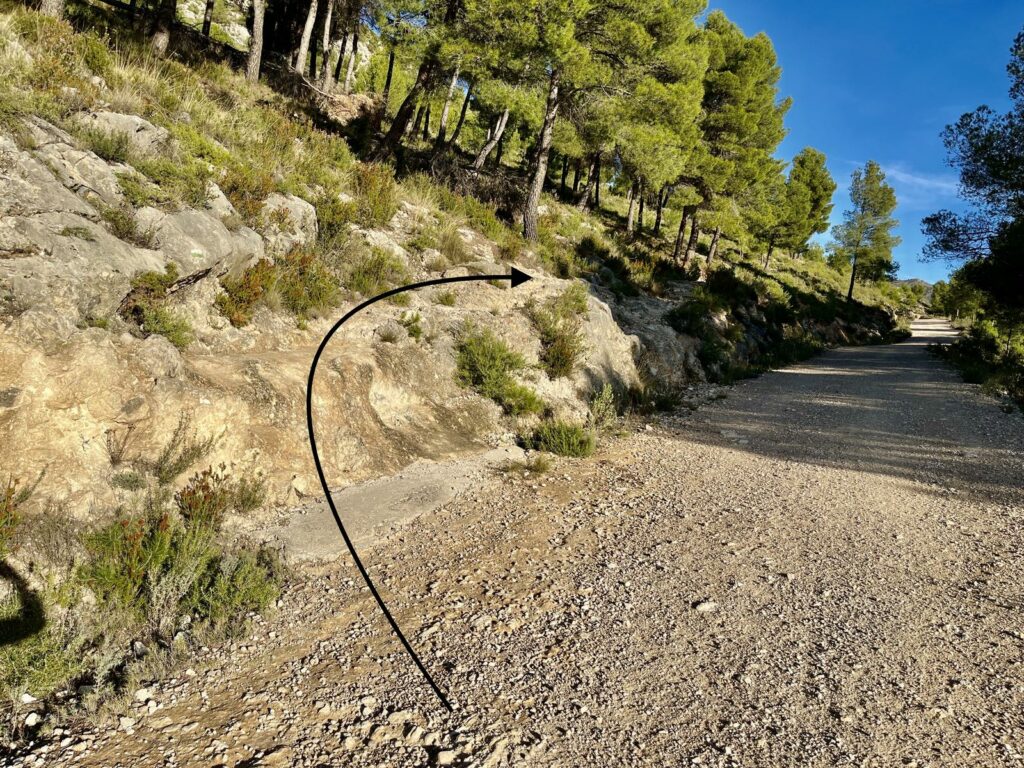
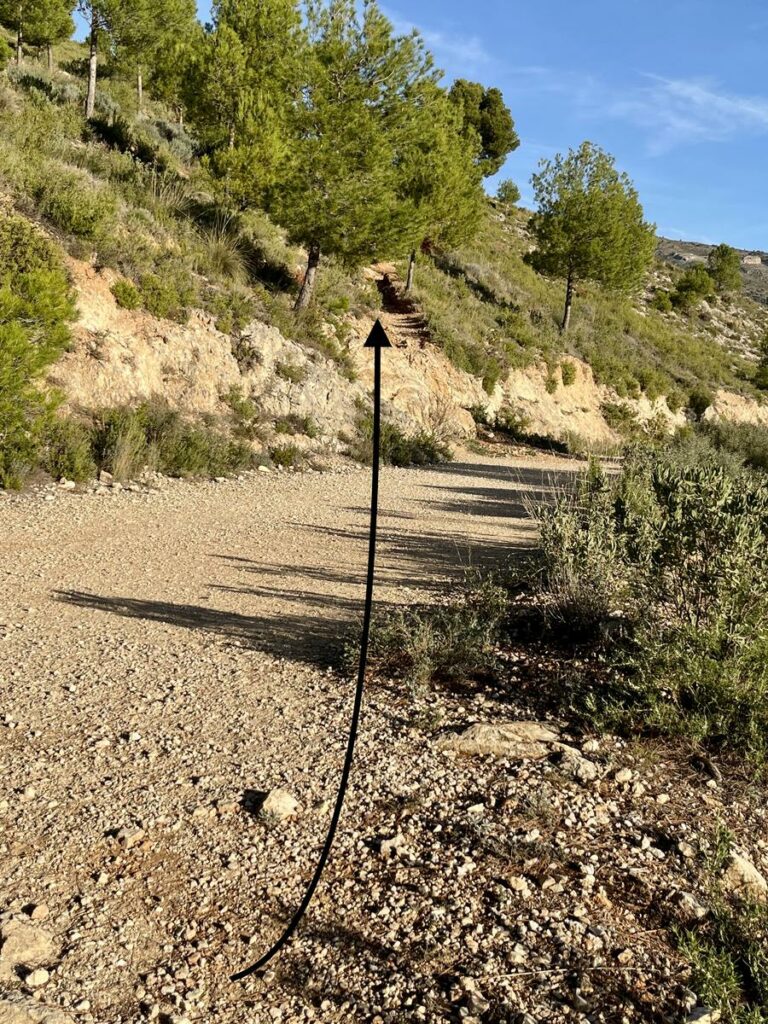
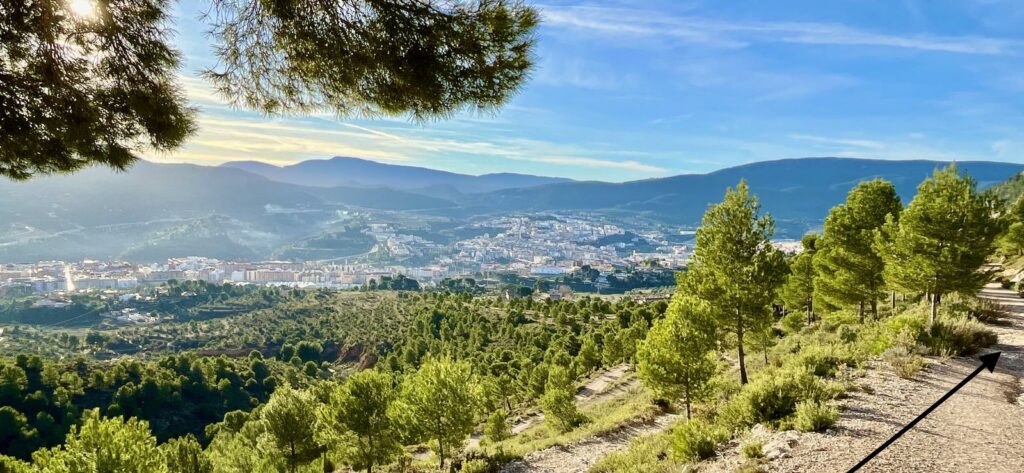
It is necessary to leave the Coll d’En Sabata path and take the one on the left that will take us to the Serelles fountain and pond. From this point take the path on the right of the basin.
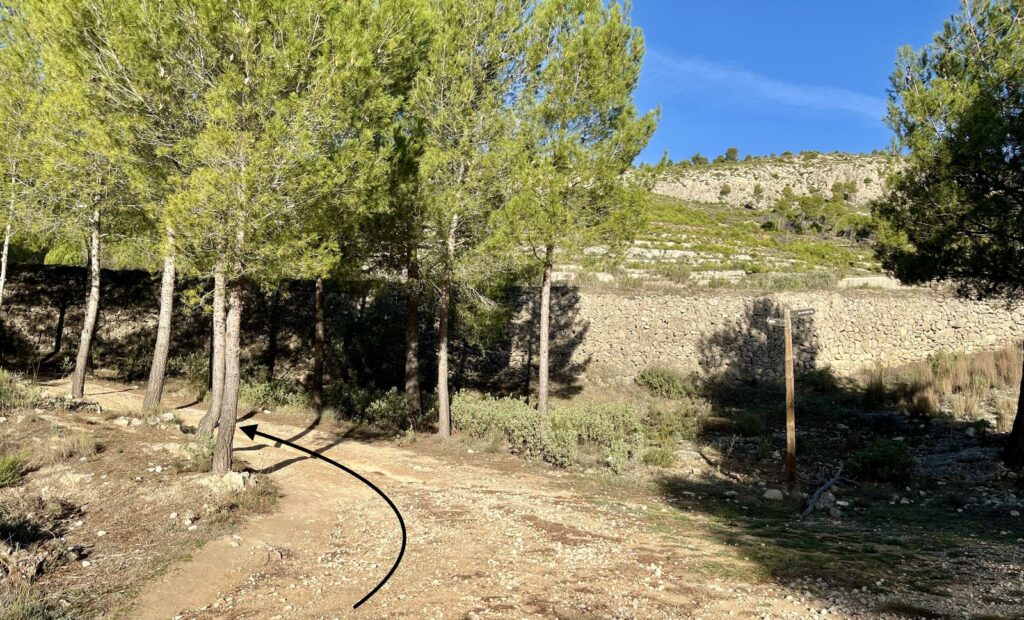
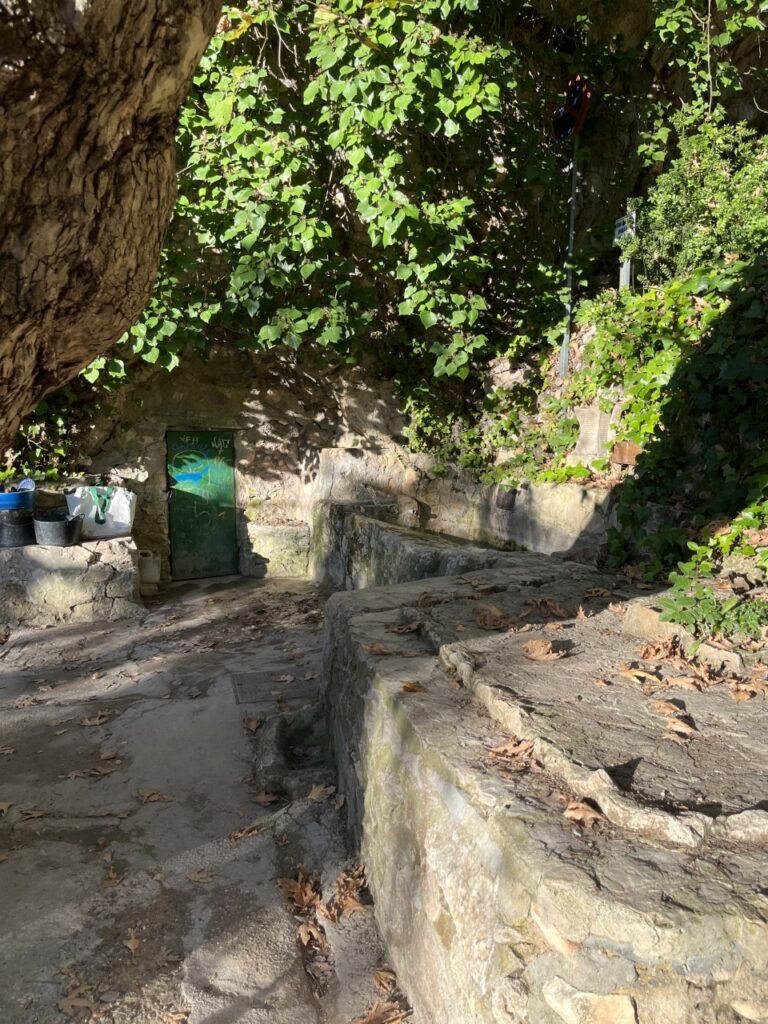
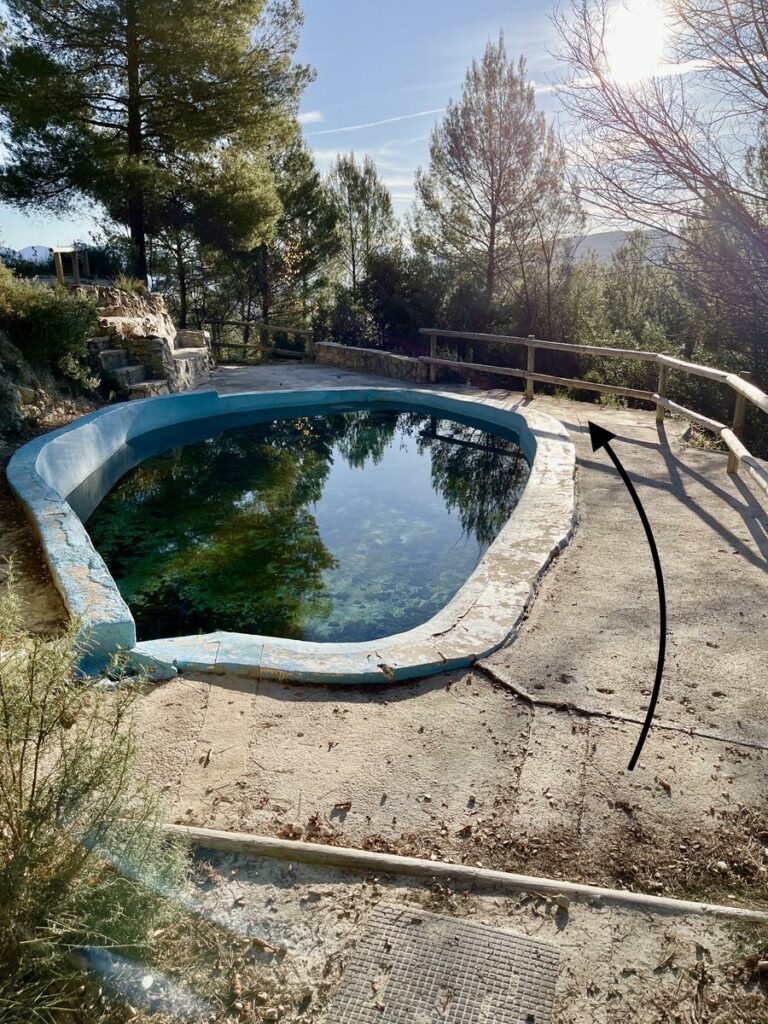
Contiue along the path, and on the left take the next crossing.
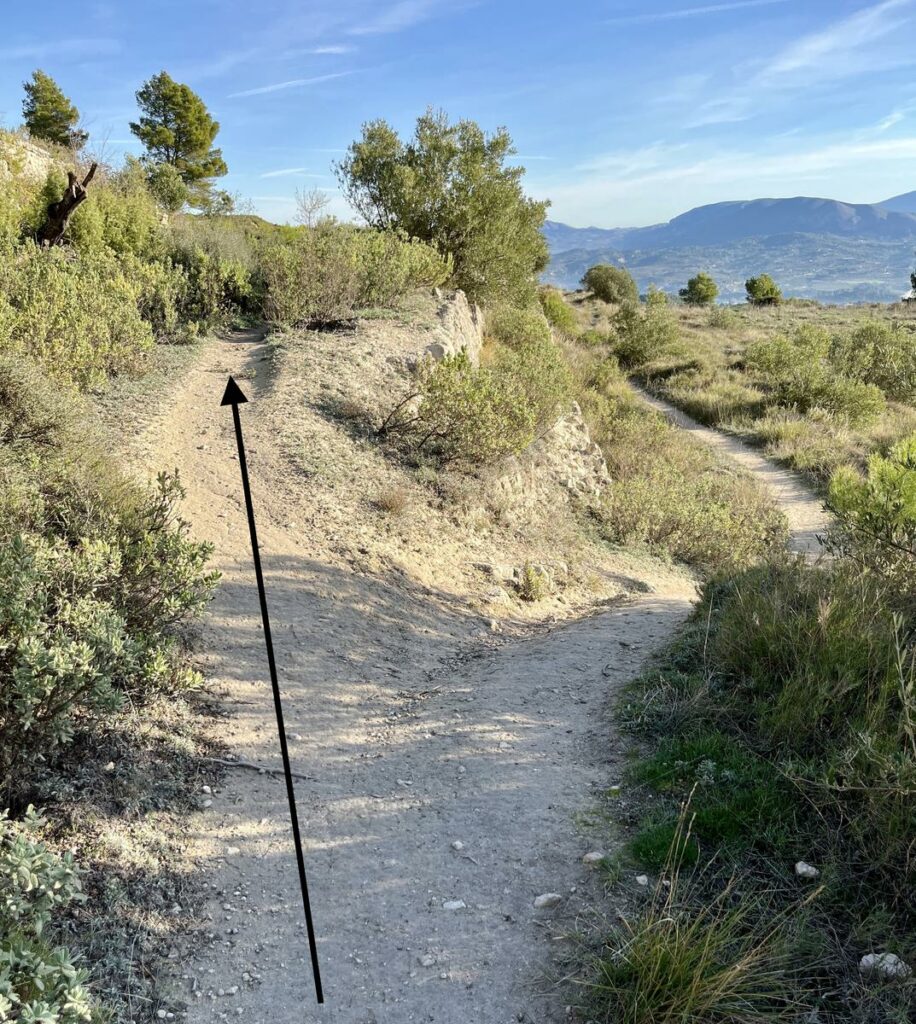
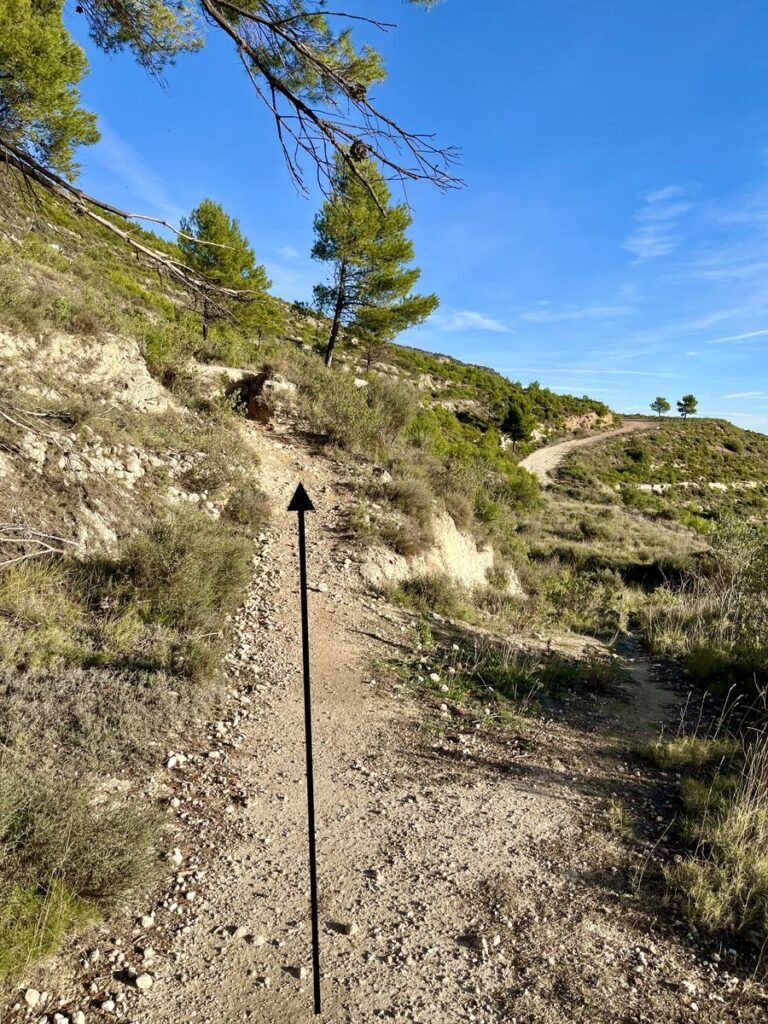
At the end of the trail, follow the path on the left that takes you to the Coll de Sabata passing under the Cim de la Mola (1105 m.).
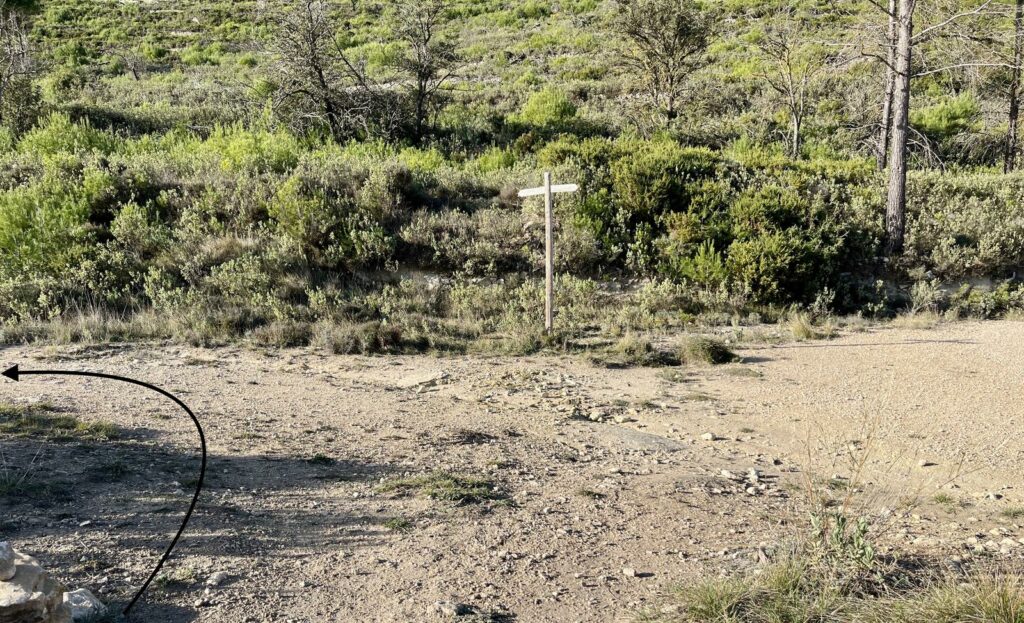
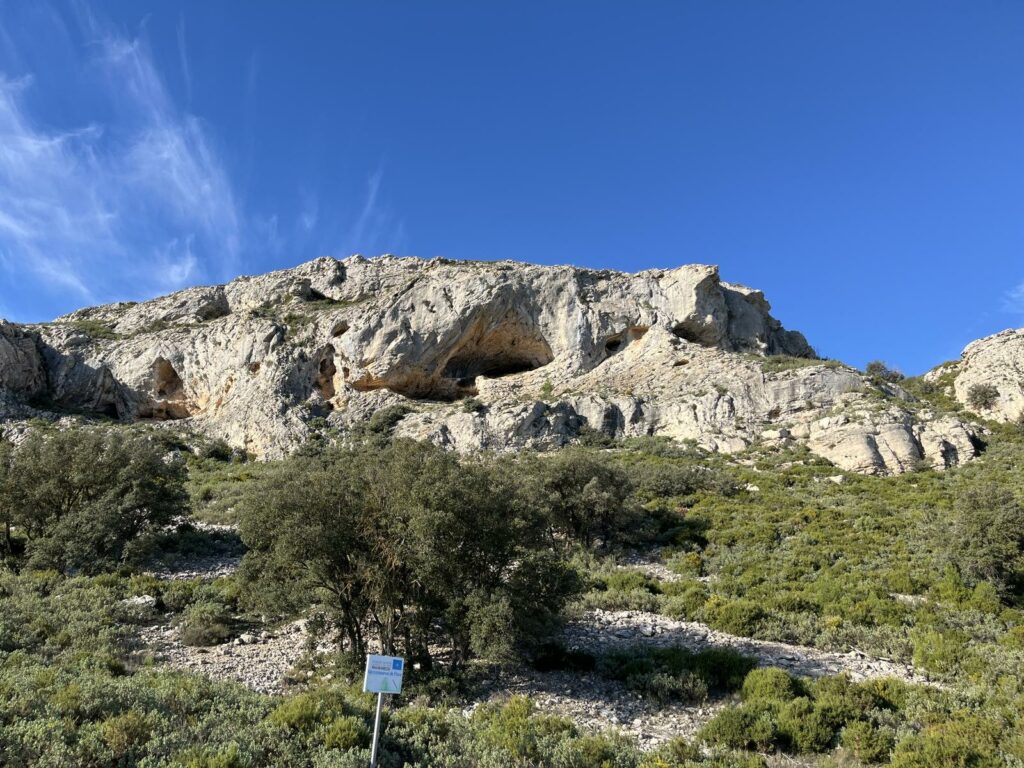
Continue along the GR 330, towards Agres until the Coll de Sabata and where you must take the GR 330 I PR-CV 37 towards Montcabrer. This path has a steep climb, so better take a path to the right that takes to Cavall Bernat.
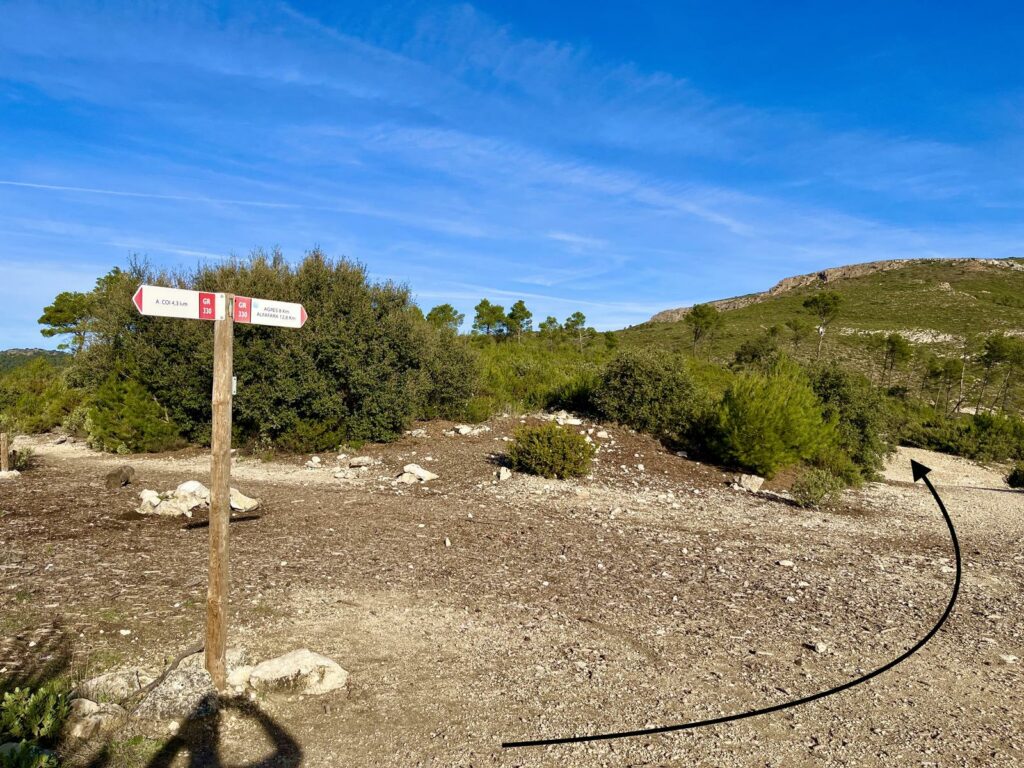
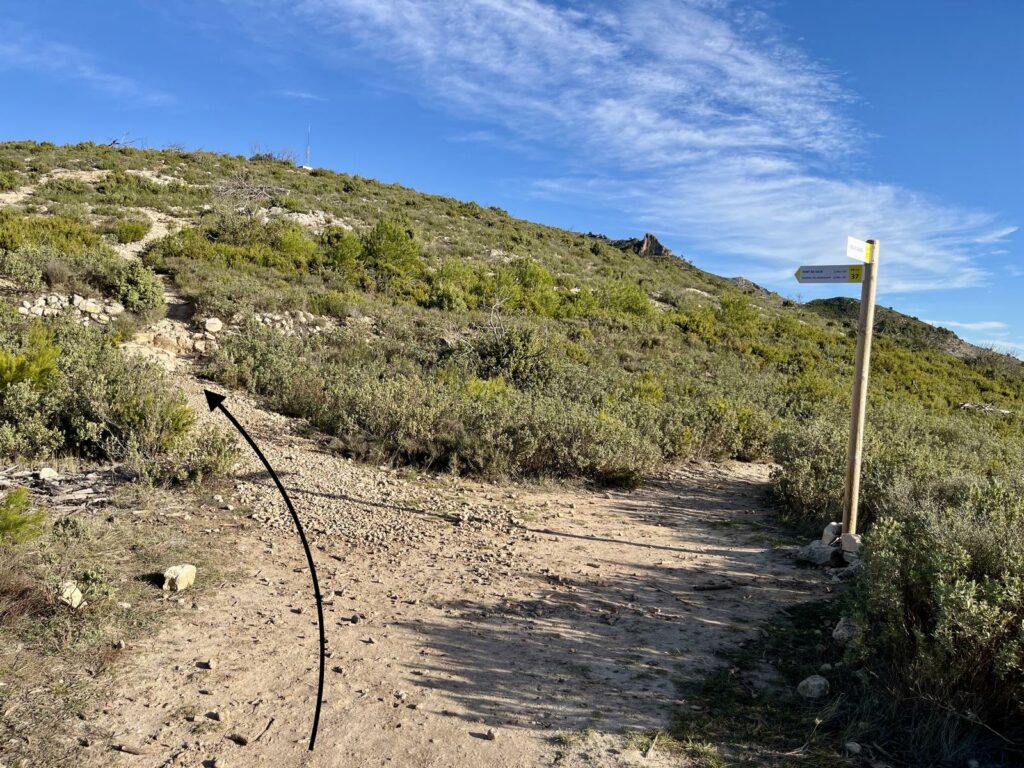
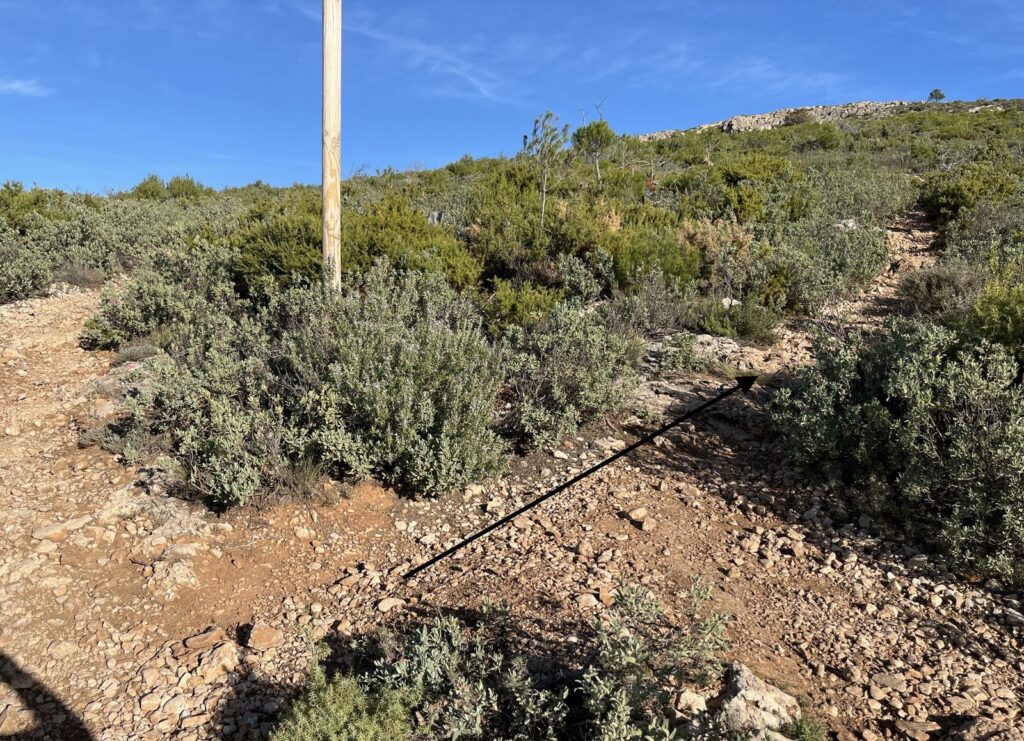
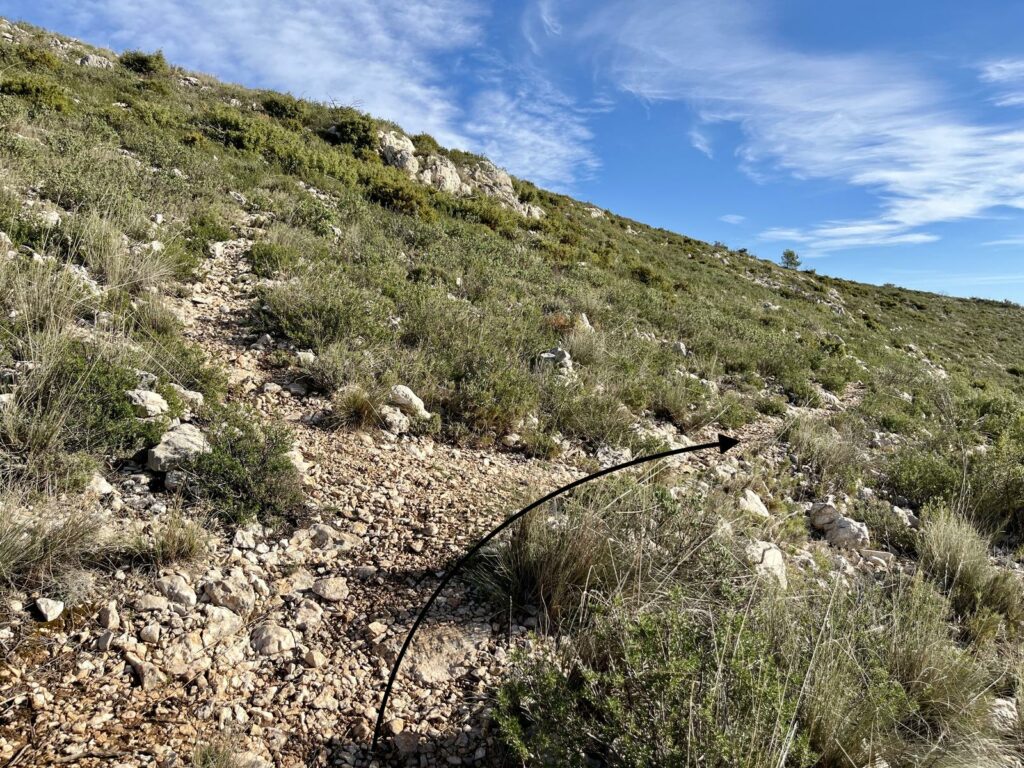
From the Cavall Bernat a path leads us to the Cantera Botella. It’s marked with stones, with a steep slope, with a lot of loose rock so to pay close attention.
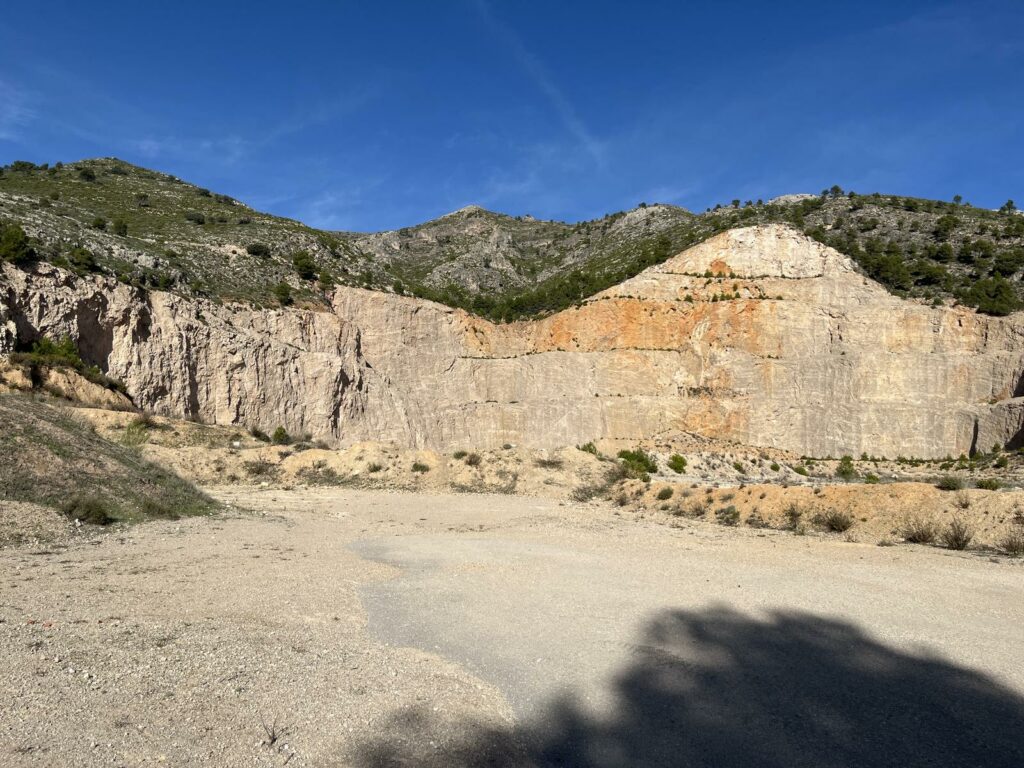
Continue along the road and take the path that appears on the right marked in red and white.
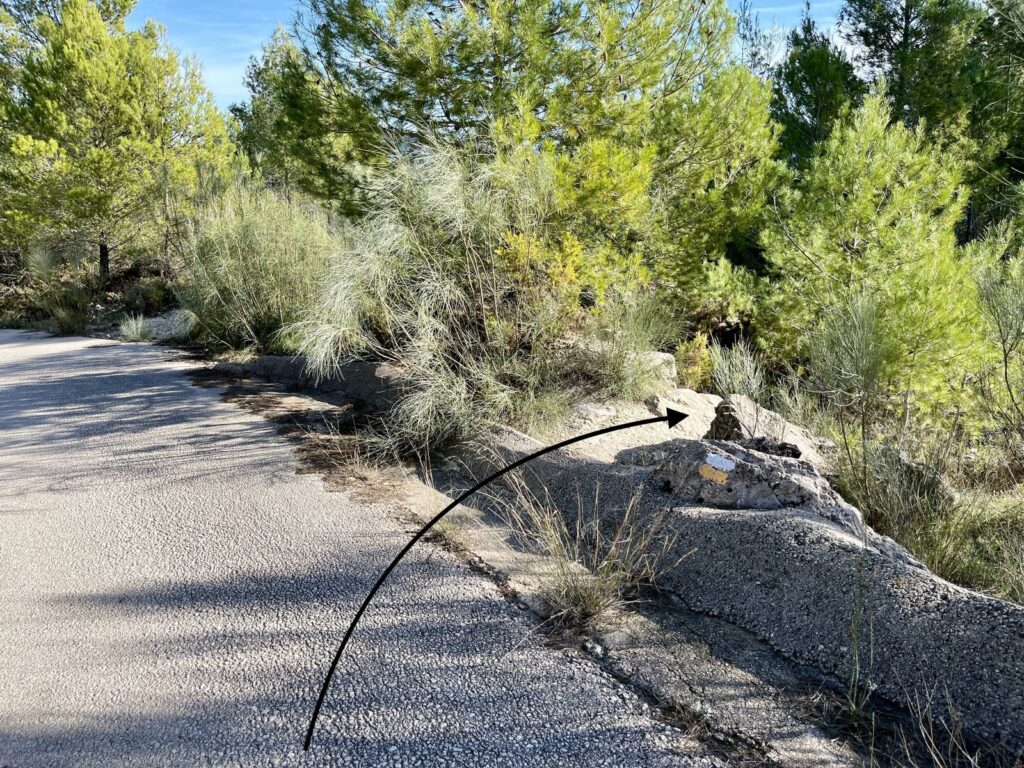
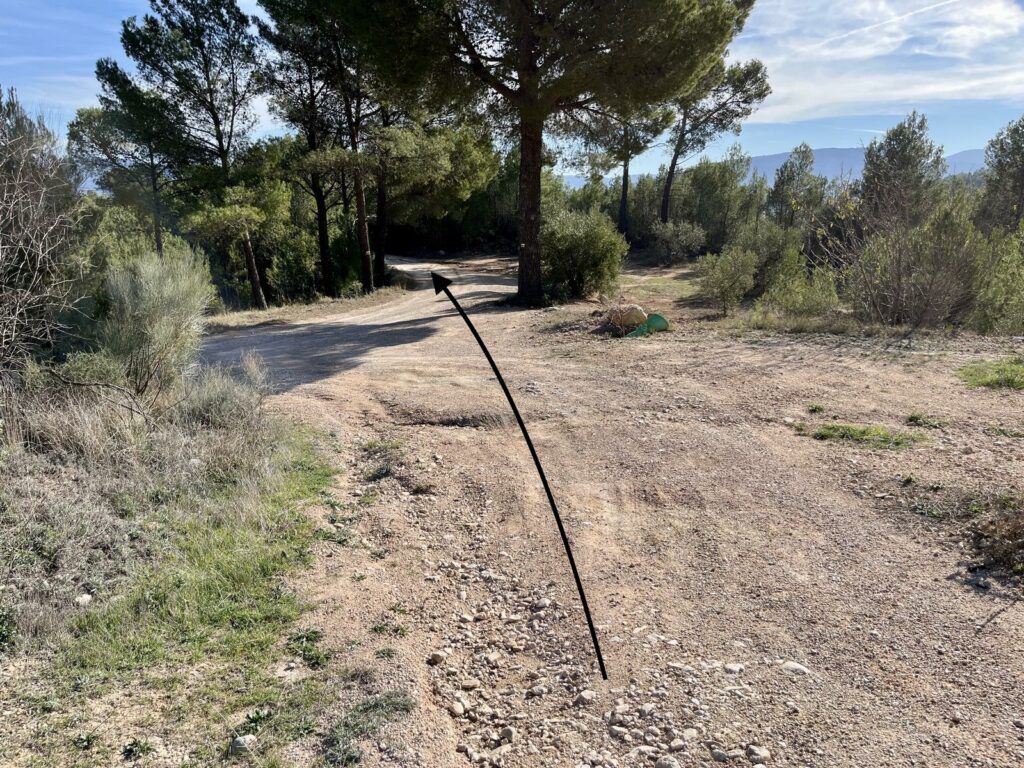
Continue descending until arriving at the Foietes refuge, which you can visit. There’s a campsite and resting area with tables and fountain.
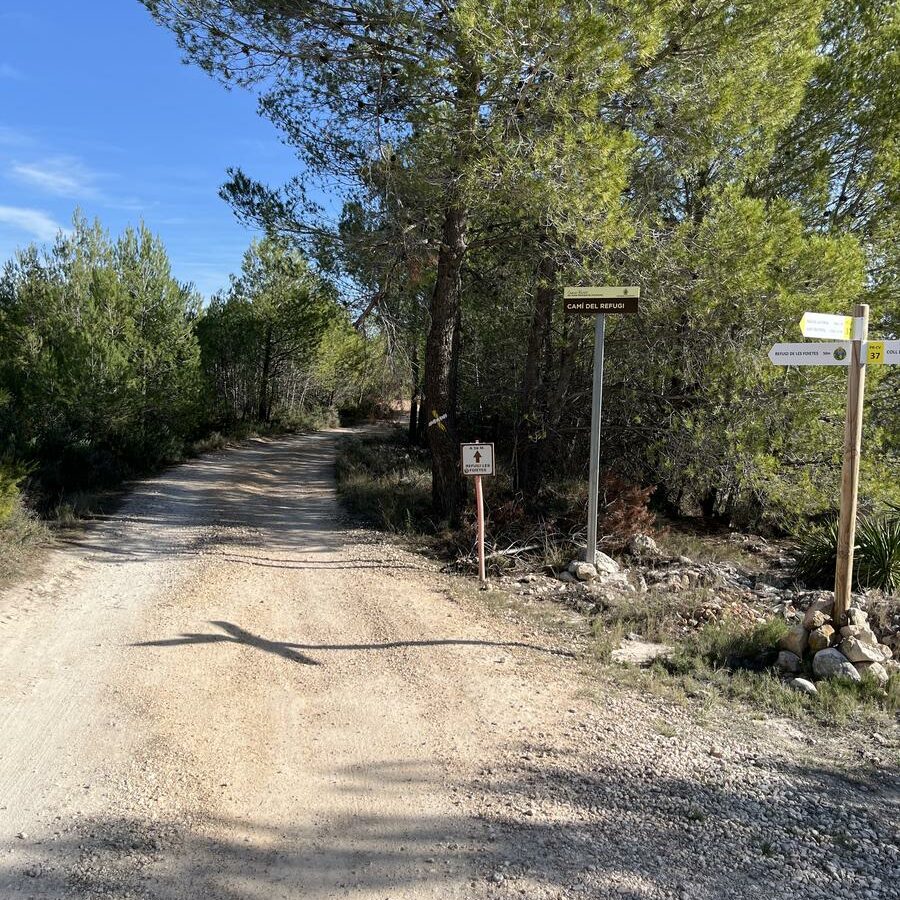
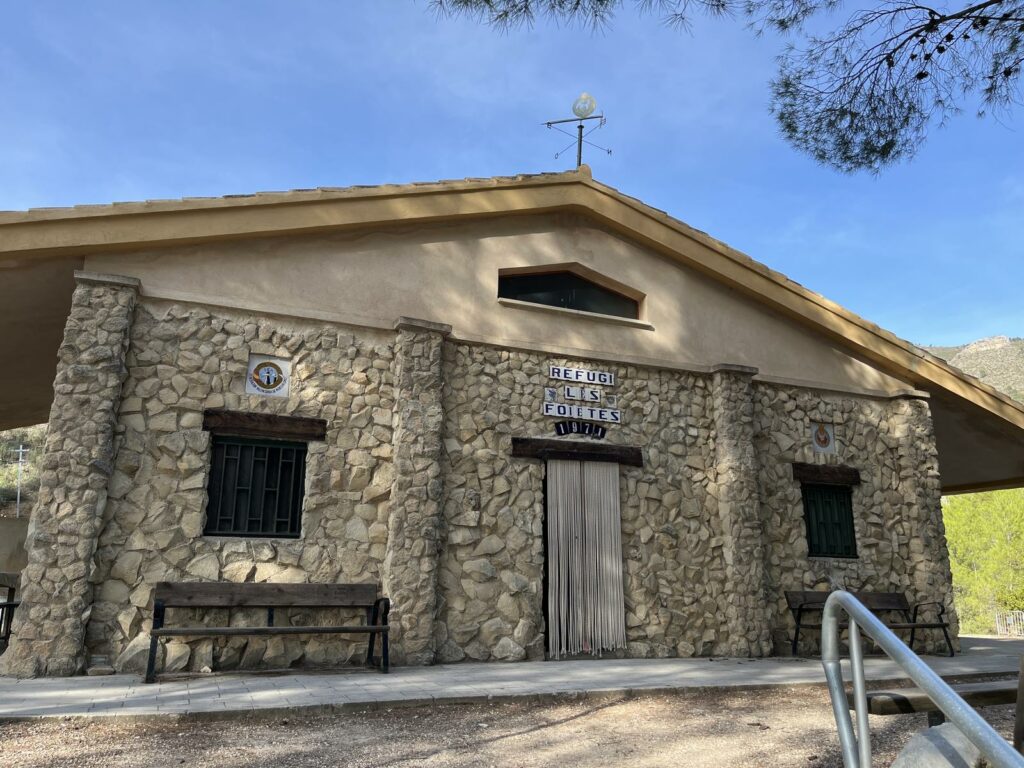
Then return along the same path to continue along PR-CV 37 towards Mas de la Penya. Cross the road to the quarry and take the path marked in red and white that leads to Mas de la Penya and before arriving at Mas de la Penya take the PR-CV 37 towards the Castell and the climbing area.
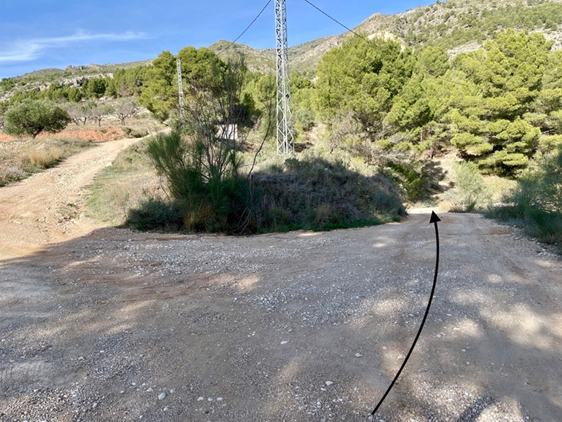
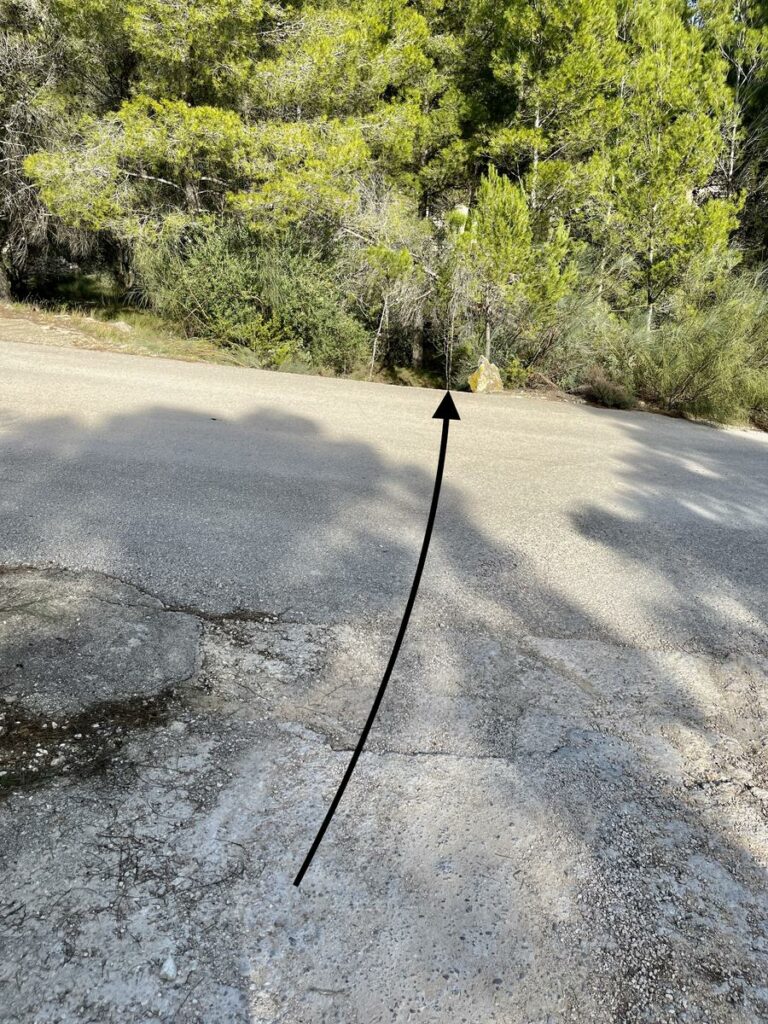
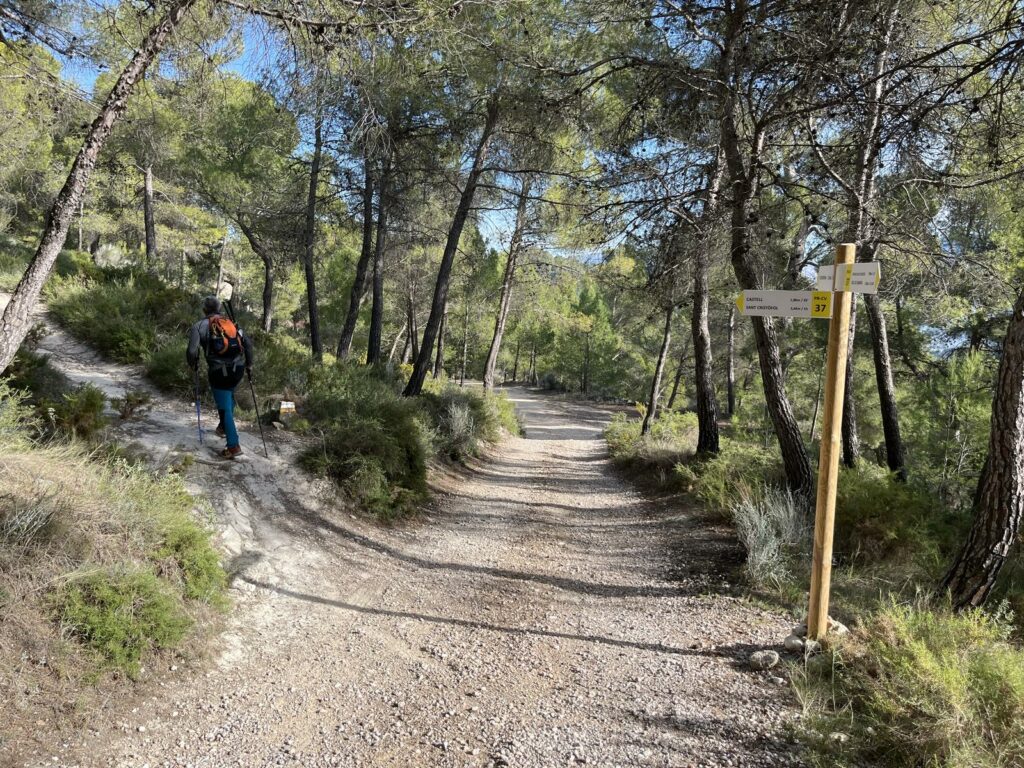
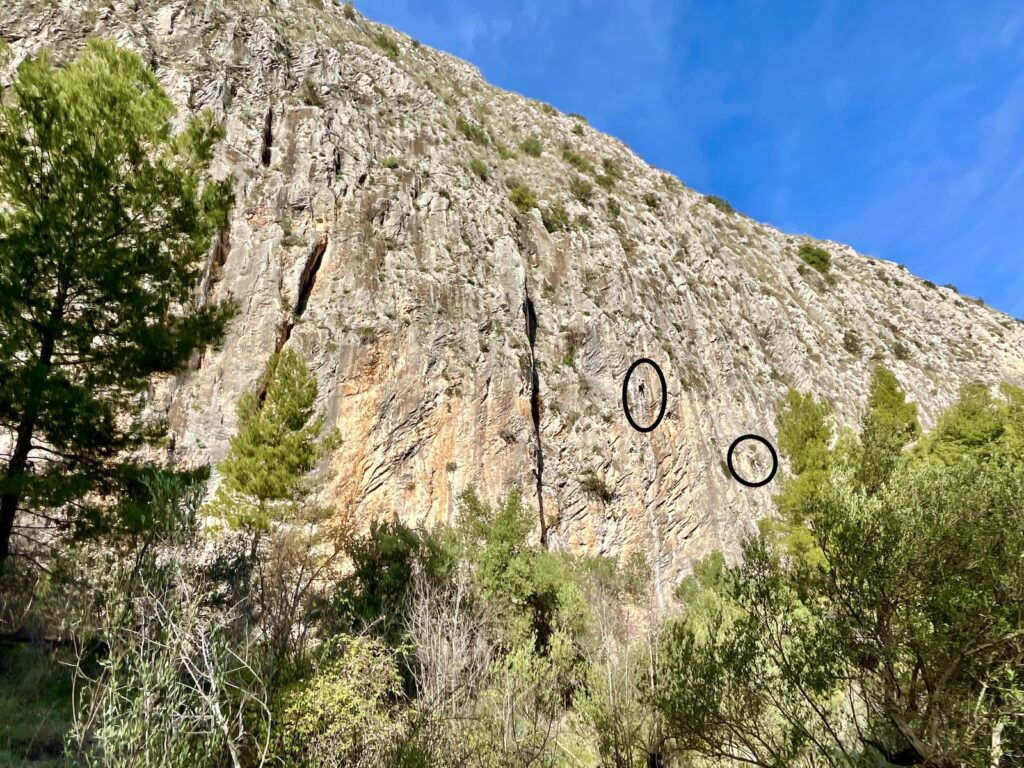
From the climbing area, and always following the PR, to the car park and Castell de Cocentaina. We reach Mas de la Penya. Pay attention to the next climbs.
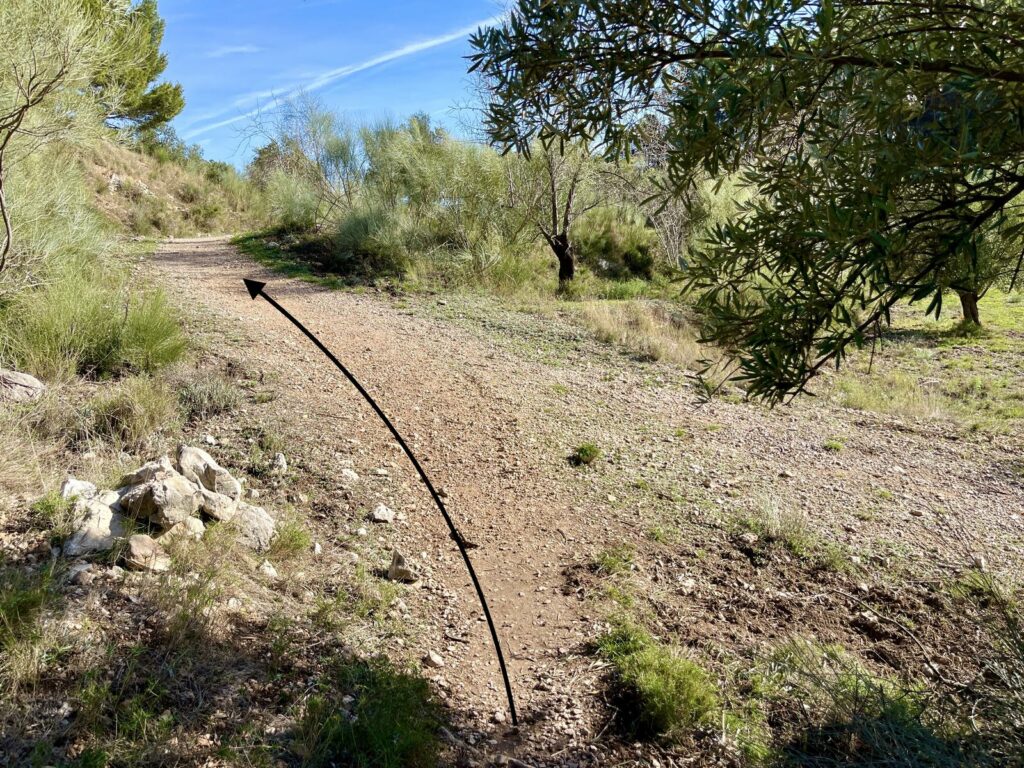
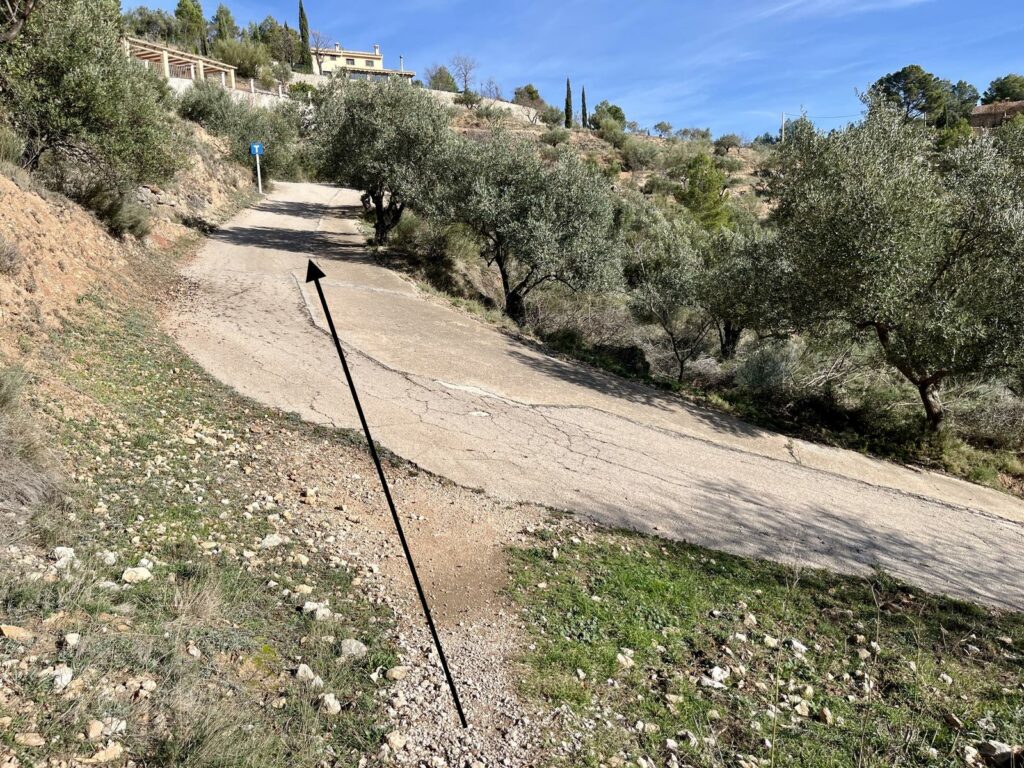
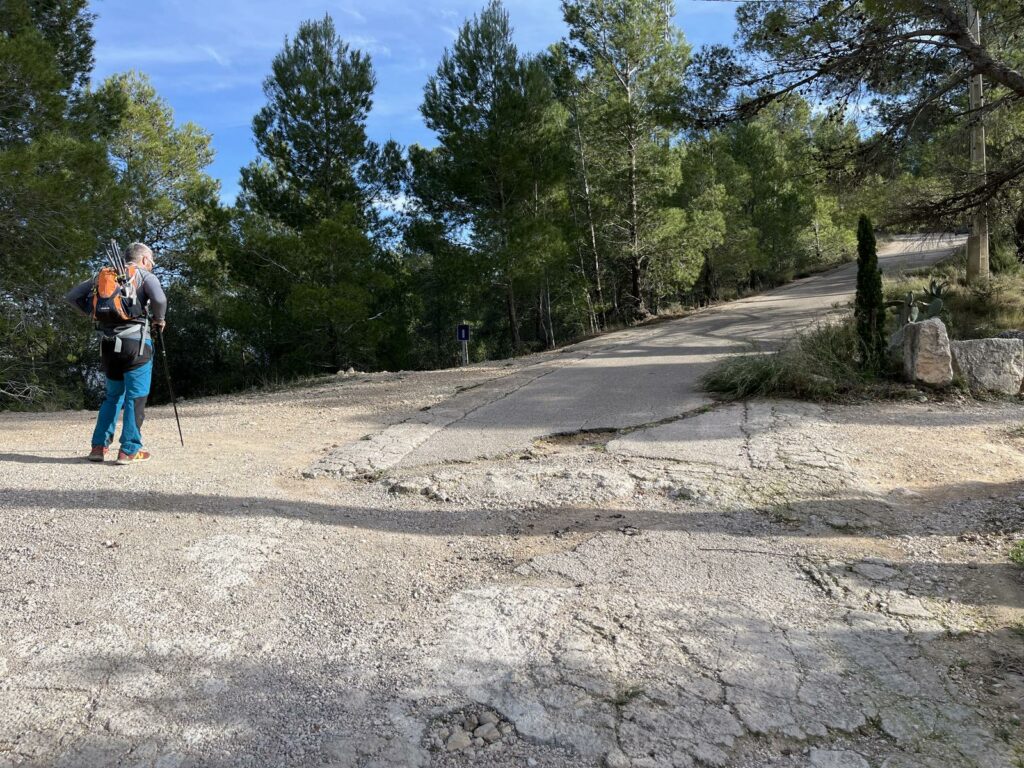
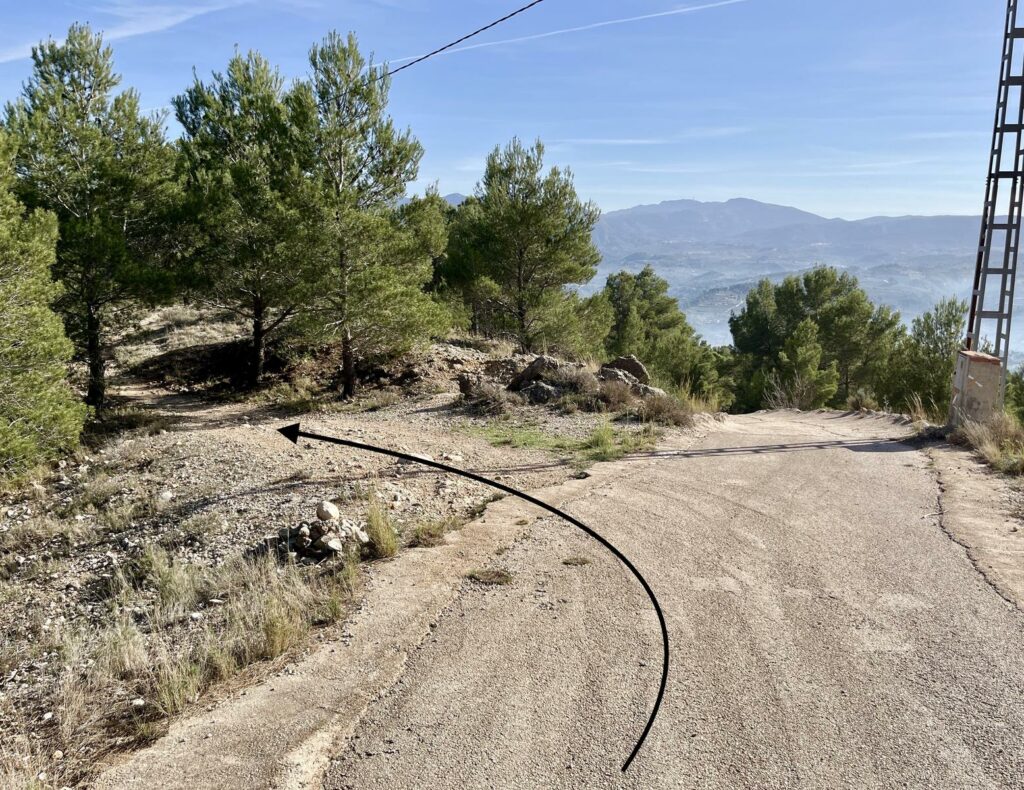
COCENTAINA CASTLE dominates the regions of Alcoià and El Comtat from its privileged position, crowning the last counterfort of the eastern slope of Serra de Mariola, 754 meters high. It is a building of Gothic-military style. It was built at the end of the 13th century and the beginning of the 14th century. It is a large square tower of 13,5 meters of side by 12 meters of height. It consists of two floors and is topped by a flat terrace. The floors are divided into four quarters, one of them being the patio. In the 3 space of the patio are the stairs that communicate the different levels. Under the pavement in the subsoil is the cistern. All the important parts and rooms are built of brick, the rest masonry.
Its great tower is a visual landmark in the landscape, which is perceptible from a distance in a large regional area. This fact gives an idea of the strategic importance it had for the defense of the territory and as a place of reference for other castles in the area.
The tower, restored a few years ago, is part of the castle of which only archaeological remains remain.
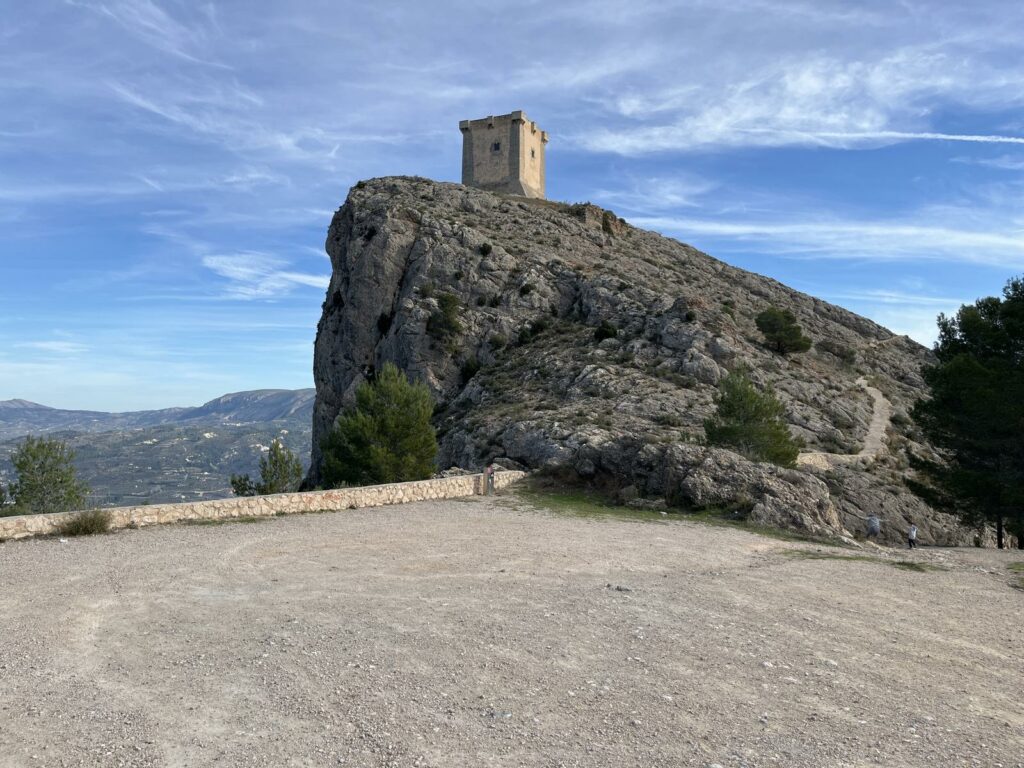
From the parking lot, we can go up to the castle. The access road from the base is an asphalted path and it will take over 5 minutes to get to the great tower itself.
By the right path go down to the Hermitage of Santa Bàrbara. Watch overhangs.
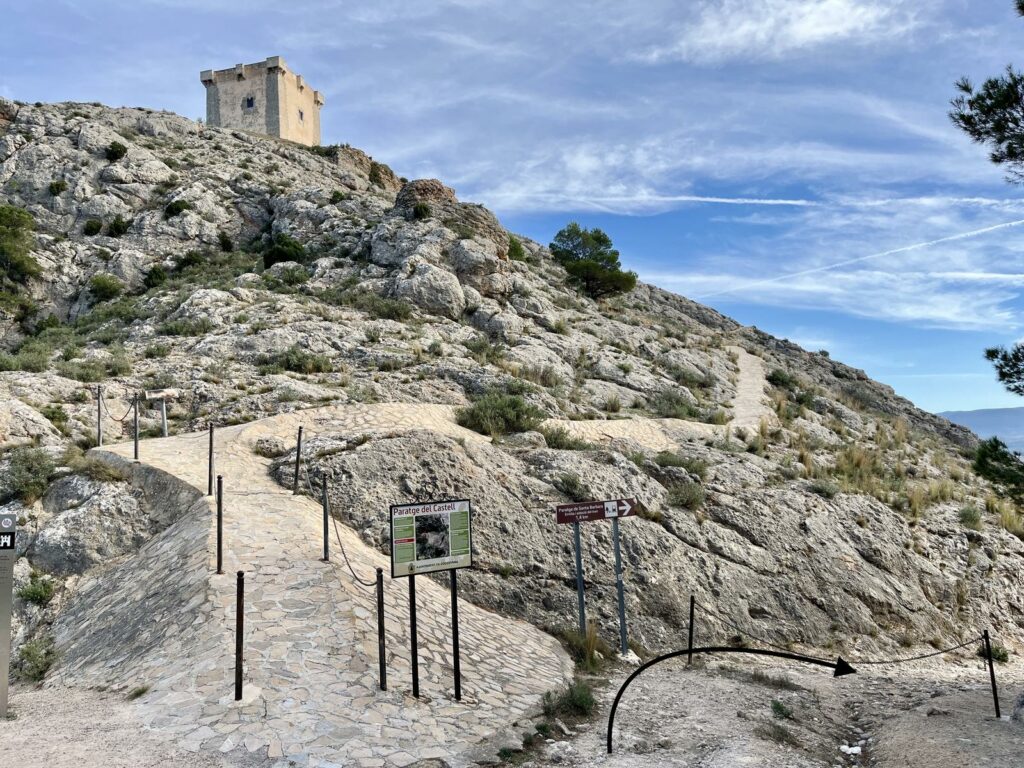
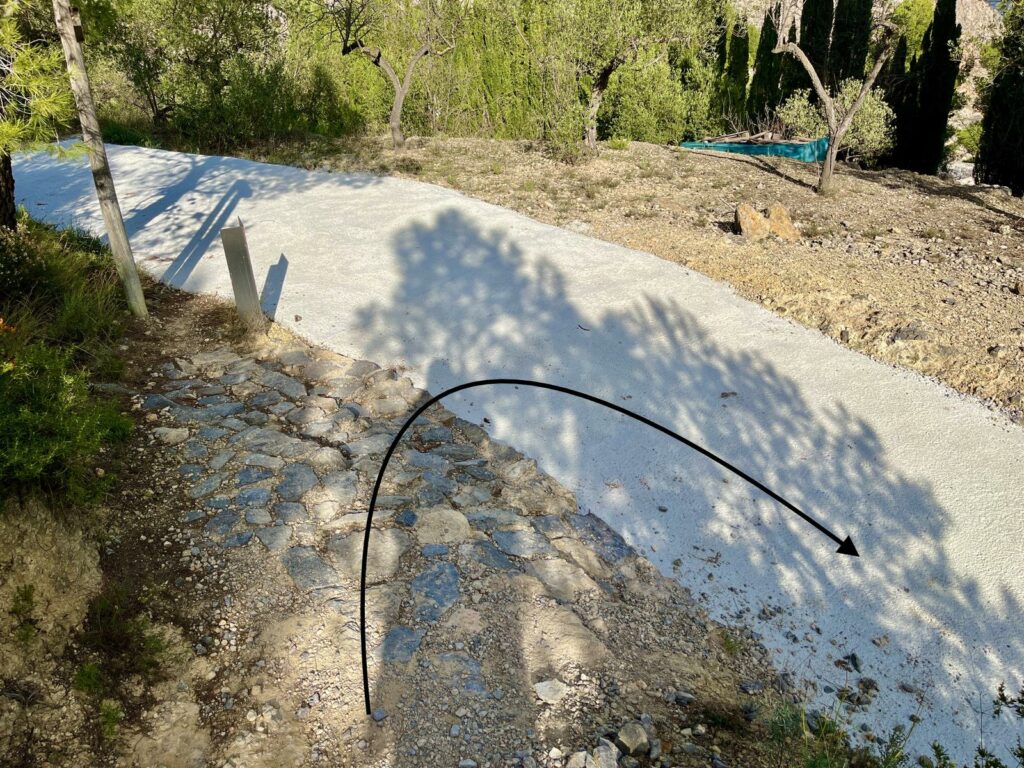
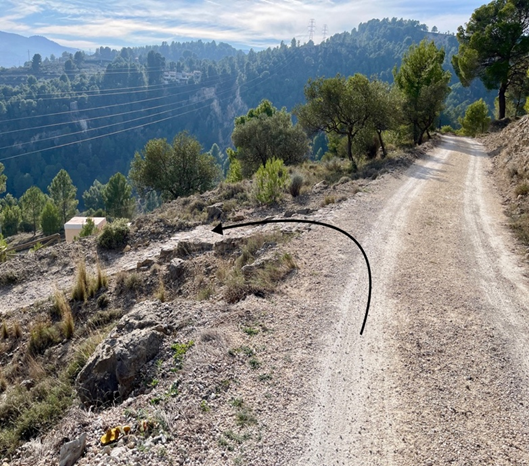
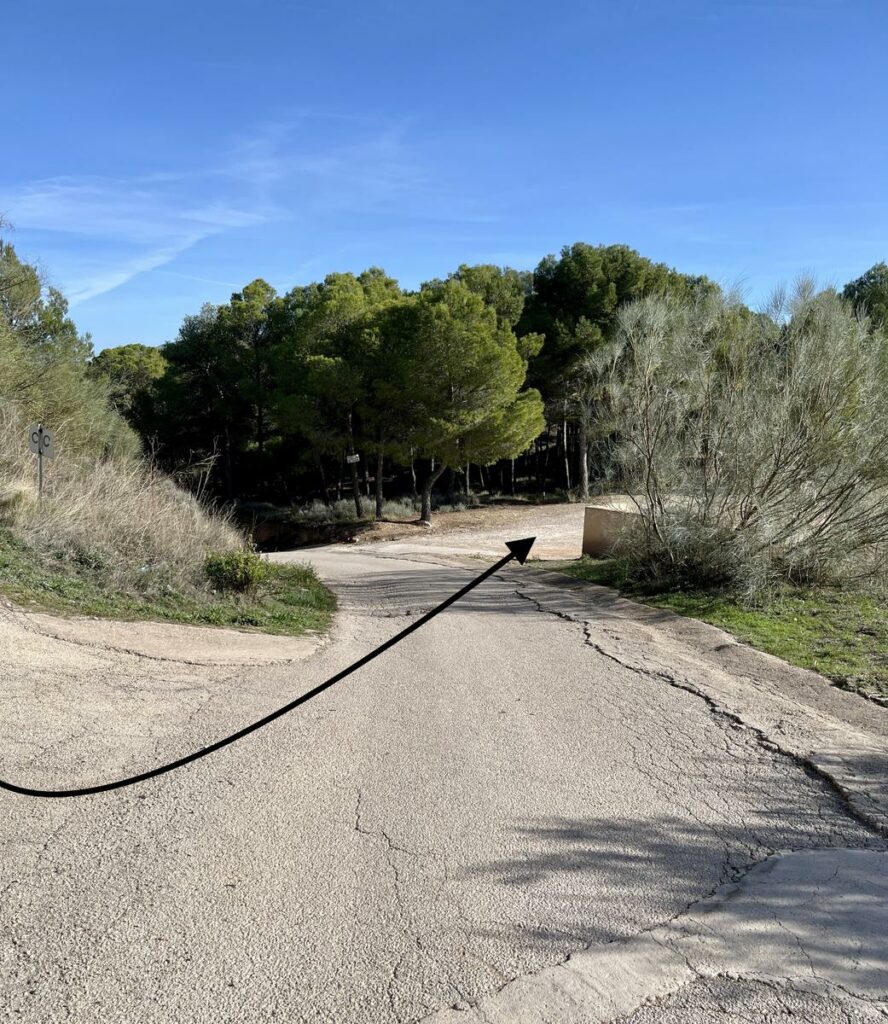
You can visit the Hermitage of Santa Bàrbara and then by a quiet asphalted road you arrive at Cocentaina.
SANTA BARBARA HERMITAGE is a religious building from medieval times. It is in the area with the same name, it is a religious building of conquest, dating from the 13th century and the first half of the 14th century, which consists of a single nave with a transept, separated by wooden arches that finish in buttresses. The entrance is a semicircular arch door.
From the architectural point of view, the Santa Barbara hermitage has been classified as a conquest church, typical by a woody double-sided roof supported on pointed arches. It was built between the end of the 13th century and the beginning of the 14th century, coinciding with the moment of full settlement and domination of the Christians.
Currently, the hermitage is owned by the municipality and has not been used for worship since the retirement of the last hermit, who took care of the chapel until the seventies. For the festivity of the Inmaculate Conception, on December 8th, the Corriola is celebrated, a popular festival in which it is traditional to eat bread and sausage cake, the turning of the bell, the walk through the parishes and drink at the fountain.
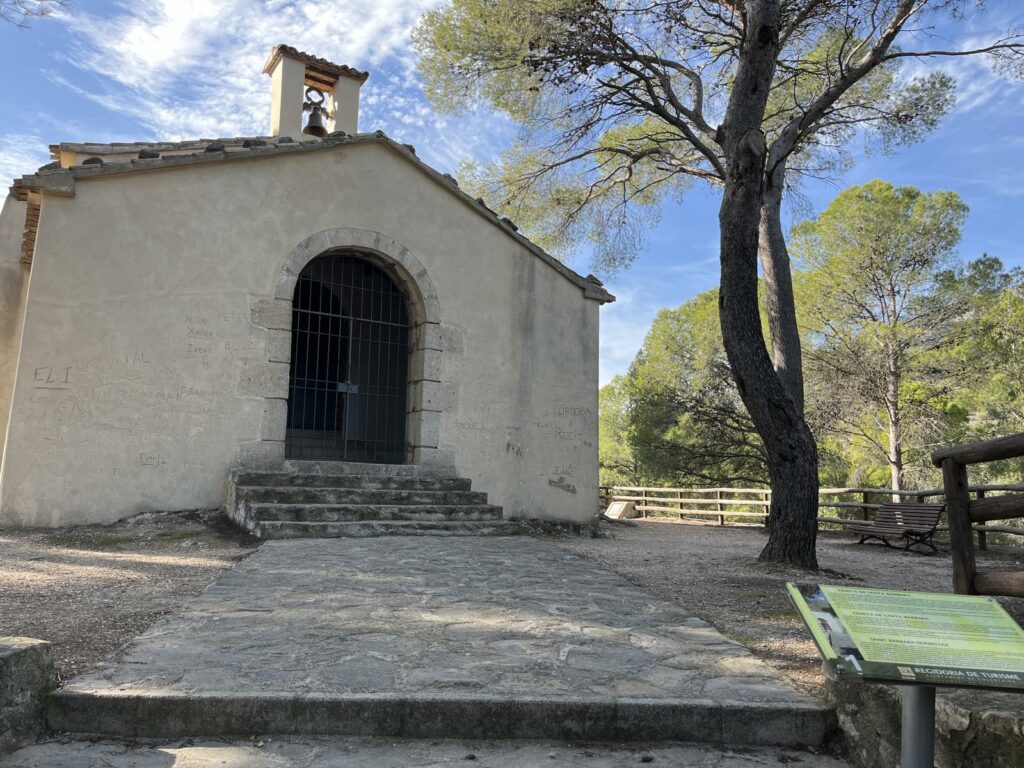
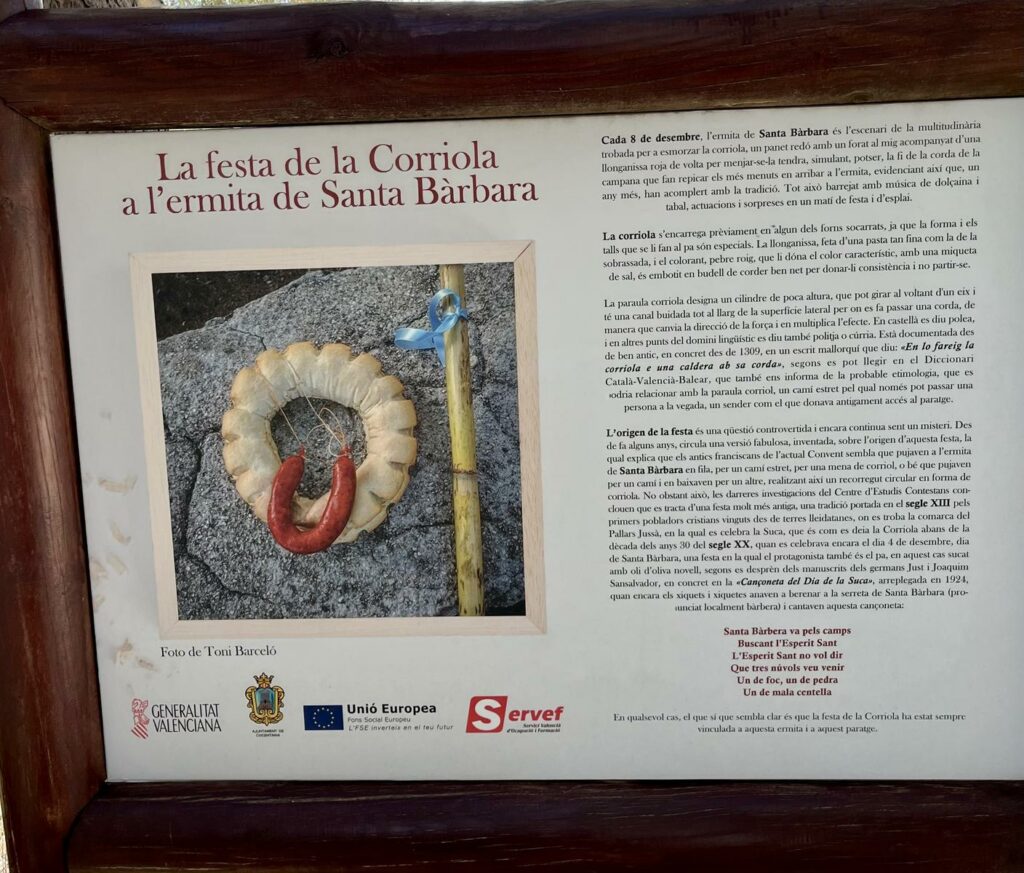
Come into Teular Cultural Center, in the old townc, passing through the church and square of el Salvador, the old Raval square and finish this section in Plaça del Palau.
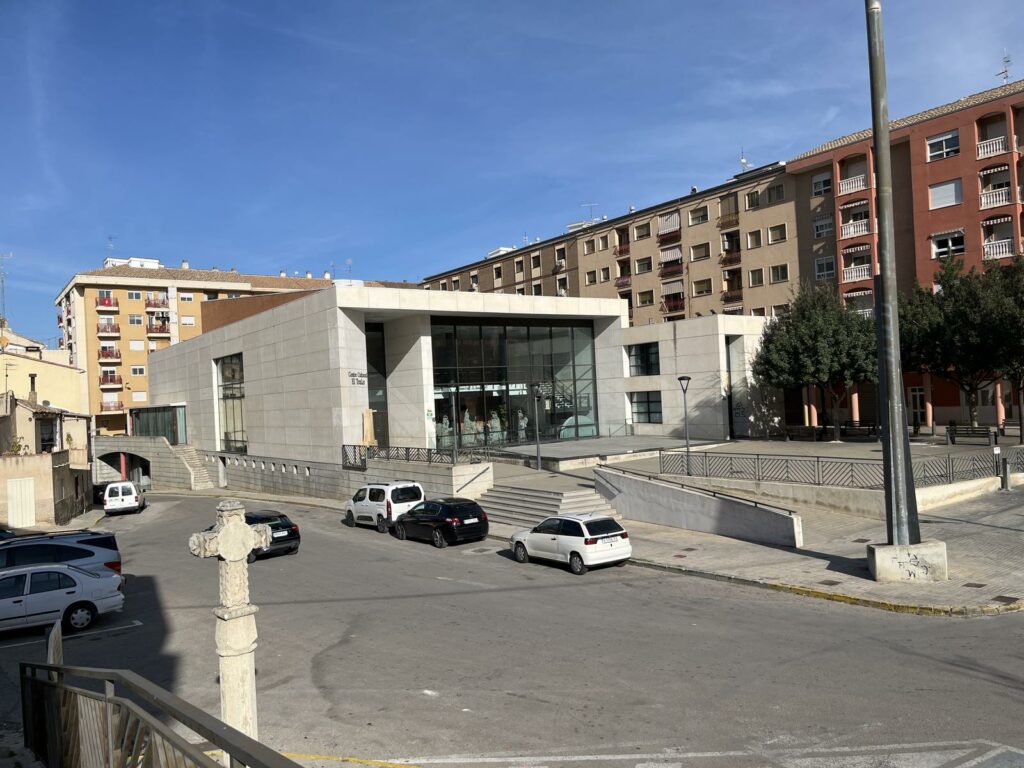
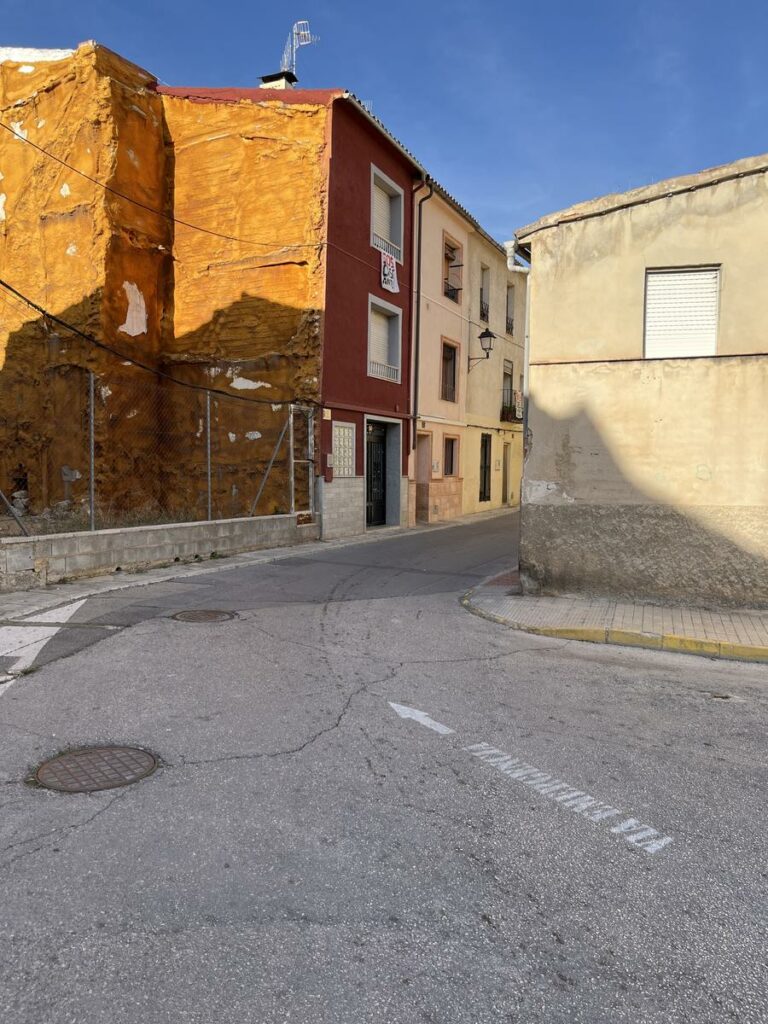
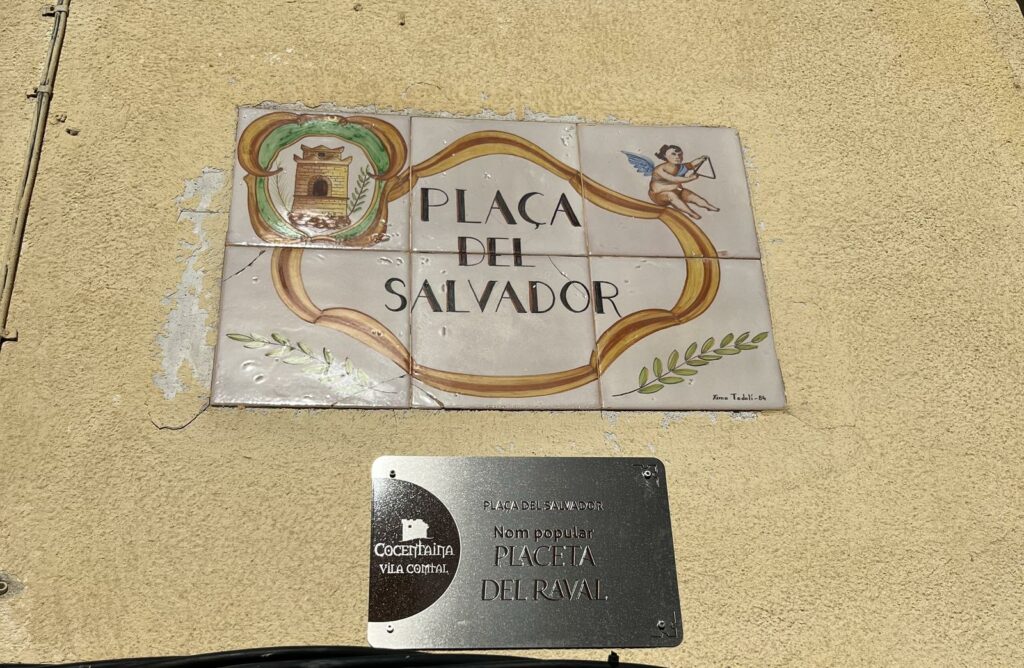
RAVAL. OLD MUSLIM QUARTER. The Raval quarter still preserves almost intact the ancient layout. It was built around a large mosque (currently the church of El Salvador), with narrow, winding streets and narrow, winding lanes that from a labyrinthine network.
CHURCH OF EL SALVADOR. Built at the end of the 16th century over the old mosque, it is a typical Reinaissance model, with a single nave of four sections, with , amb furnicule chapels located between the buttresses with a flat narrower than the ship and attached to it by an arch.
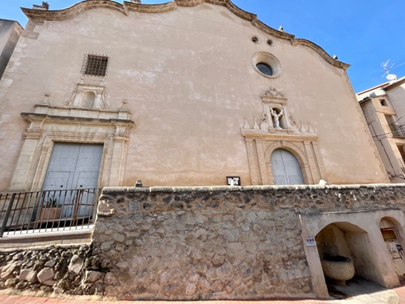
COCENTAINA PALACE is one of the architectural jewels of the Valencian Gothic and Renaissance. The palace is a fortified manor house which construction began in the 13th century under the rule of Roger de Llúria, admiral of the fleet of the Crown of Aragon and Sicily. The current appearance of this emblematic monument is the result of coninuous construction and renovations. The location of the castle is not random, since it is located on the edge of the Sord ravine, a privileged situation to control the access roads to the town and to protect, together with the castle, the town of Cocentaina. The origin of the palace dates from the beginning of the 14th century as a fortification, maintaining the quadrangular plan that is still preserved today. Later, the purchase of the town of Cocentaina in 1448 by Ximén Pérez de Corella had a direct impact on this monument. First, he changed its appearance and transformed it into a palace, including the decoration of the interior rooms with Baroque and Renaissance styles.
Finally, after witnessing the Miracle of the Mare de Déu, the Corella family built a monastery of Clarisse monks attached to the same palace in the 17th century.
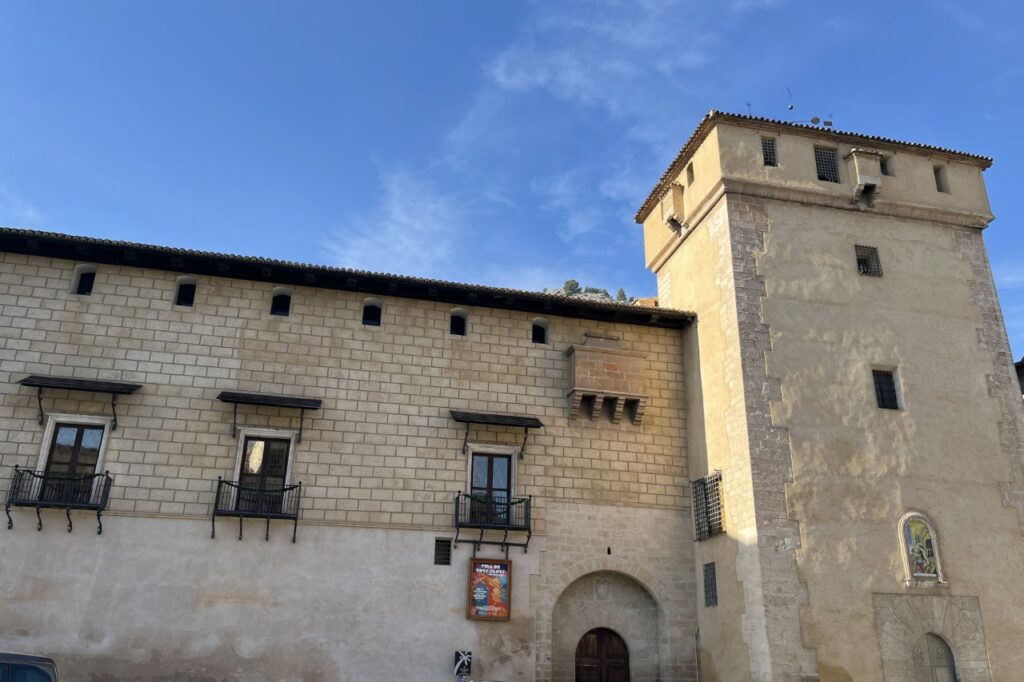
Final of the 5th Track: Cocentaina Palace
